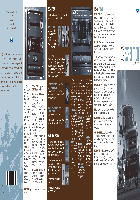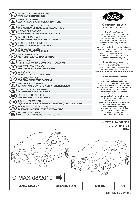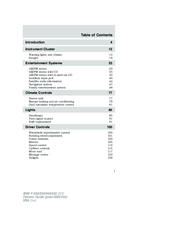Посмотреть инструкция для Ford F-350 Super Duty (2013) бесплатно. Руководство относится к категории автомобили, 2 человек(а) дали ему среднюю оценку 9.6. Руководство доступно на следующих языках: английский. У вас есть вопрос о Ford F-350 Super Duty (2013) или вам нужна помощь? Задайте свой вопрос здесь
Не можете найти ответ на свой вопрос в руководстве? Вы можете найти ответ на свой вопрос ниже, в разделе часто задаваемых вопросов о Ford F-350 Super Duty (2013).
Как перевести мили в километры?
1 миля равна 1,609344 километрам, а 1 километр — 0,62137119 милям.
Где я могу узнать идентификационный номер транспортного средства Ford?
Место размещения идентификационного номера транспортного средства зависит от марки и типа транспортного средства. Номер может быть выбит на раме транспортного средства или указан на номерном знаке. Чтобы узнать место расположения идентификационного номера транспортного средства лучше всего ознакомиться с руководством по эксплуатации Ford F-350 Super Duty (2013).
Что такое идентификационный номер транспортного средства (VIN)?
Идентификационный номер транспортного средства — уникальный для каждого транспортного средства идентификационный номер. Аббревиатура VIN расшифровывается как «Vehicle Identification Number» (Идентификационный номер транспортного средства).
Когда транспортному средству Ford требуется техническое обслуживание?
Регулярное техническое обслуживание необходимо всем транспортным средствам. С информацией о том, как часто необходимо проходить техническое обслуживание и чему именно стоит уделять особое внимание можно ознакомиться в инструкции по техническому обслуживанию. Как правило, транспортное средство требует технического обслуживания каждые 2 года или 30 000 километров пробега.
Когда следует заменять тормозную жидкость на Ford?
Тормозную жидкость рекомендуется менять каждые два года.
В чем разница между топливом E10 и E5?
В топливе E10 содержится до десяти процентов этанола, в то время как в E5 содержится менее пяти процентов. Соответственно, топливо E10 менее вредит окружающей среде.
Одна или несколько дверей не открываются изнутри. Что мне делать?
Скорее всего, замок оснащен защитой от детей и поэтому не может быть открыт изнутри. Процедура открытия замка с защитой от детей зависит от марки и типа замка.
Автомобильный радиоприемник не включается, что делать?
Если автомобильный радиоприемник не включен, на него не будет подаваться питание. Убедитесь, что красный провод подключен к контактному источнику питания, а желтый провод — к источнику питания постоянной мощности.
Инструкция Ford F-350 Super Duty (2013) доступно в русский?
К сожалению, у нас нет руководства для Ford F-350 Super Duty (2013), доступного в русский. Это руководство доступно в английский.
Не нашли свой вопрос? Задайте свой вопрос здесь
«Workshop Manual 2008 F-250, 350, 450, 550 Super Duty»
Сервисное руководство на 2008 модельный год.
Охватывает:
Всю линейку моделей Super Duty: F-250, F-350, F-450, F-550
Все двигатели: 5.4 бензин, 6.8 бензин, 6.4 дизель
Все типы кабин: Short Cab, Super Cab, Crew Cab
Все комплектации.
Руководство полностью на английском, перевода не существует!
Руководство в виде pdf файлов. Названия файлов и папок полностью повторяют структуру оригинального руководства.
Скачать: http://yadi.sk/d/KPlbqmF224Oqp
«Библия 6.4 Powerstroke»
Подробное описание двигателя, уникальные сервисные процедуры, спецификация, коды ошибок и т.д.
Скачать: http://yadi.sk/d/gPVPT8SV24OMf
«Сервисные рекомендации»
Service Tips
Скачать: http://yadi.sk/d/z-BFUVY724OEd
-
120.2 КБ
Просмотры: 64
Последнее редактирование модератором:
Токо ,что то он не качается , нет доступа к ресурсу пишет…..
Пробовал сегодня туда залить, выдает ошибки «Файл не загружен» и т.д.
Вообщем залил на Яндекс, там скорость скачки неплохая.
Ссылки в первом посте.
http://yadi.sk/d/NG5D1ABp29fAm
2008 F-Super Duty 250-550 Workshop Manual и Powertrain Control/Emissions Diagnosis Manual 2008 6.4L Diesel в формате chm. Выдернуто из программы Service Information.
http://yadi.sk/d/NG5D1ABp29fAm
2008 F-Super Duty 250-550 Workshop Manual и Powertrain Control/Emissions Diagnosis Manual 2008 6.4L Diesel в формате chm. Выдернуто из программы Service Information.
Схем электропроводки в эл. виде случайно нету?
Они там в svg и у меня как то криво отображаются. Плюс разделы про коннекторы глючат. Я пока не придумал, что со всем этим делать.
Они там в svg и у меня как то криво отображаются. Плюс разделы про коннекторы глючат. Я пока не придумал, что со всем этим делать.
А есть возможность залить на Яндекс саму прогу?
На этой странице вы можете совершенно бесплатно скачать Руководство по эксплуатации Ford F-350.
У документа PDF Руководство по эксплуатации 27 страниц, а его размер составляет 796 Kb.
Читать онлайн Автомобили Ford F-350 Руководство по эксплуатации
Скачать файл PDF «Ford F-350 Руководство по эксплуатации» (796 Kb)
Популярность:
3034 просмотры
Подсчет страниц:
27 страницы
Тип файла:
Размер файла:
796 Kb
Вы робот?
60
Скачать: ford-f-350-1-owner-s-manual.pdf
BB кодПрямая ссылка
Прочие инструкции Ford F-350
-
Ford F-350 Руководство по буксировке
Популярность:
1054 просмотры
Подсчет страниц:
4 страницы
Тип файла:
PDF
Размер файла:
457 Kb
Скачать (PDF 457 Kb)Читать онлайн (4 страницы)
Прочие инструкции Ford Автомобили
-
Ford 2008 F-150 Краткое справочное руководство
Популярность:
902 просмотры
Подсчет страниц:
2 страницы
Тип файла:
PDF
Размер файла:
1.87 Mb
Скачать (PDF 1.87 Mb)Читать онлайн (2 страницы)
-
Ford 2004 F-150 Краткое справочное руководство
Популярность:
903 просмотры
Подсчет страниц:
2 страницы
Тип файла:
PDF
Размер файла:
5.18 Mb
Скачать (PDF 5.18 Mb)Читать онлайн (2 страницы)
-
Ford 2008 Expedition Краткое справочное руководство
Популярность:
903 просмотры
Подсчет страниц:
2 страницы
Тип файла:
PDF
Размер файла:
3.25 Mb
Скачать (PDF 3.25 Mb)Читать онлайн (2 страницы)
-
Ford 2009 Expedition Краткое справочное руководство
Популярность:
903 просмотры
Подсчет страниц:
2 страницы
Тип файла:
PDF
Размер файла:
1.64 Mb
Скачать (PDF 1.64 Mb)Читать онлайн (2 страницы)
-
Ford WESTFALIA 307 Инструкция по эксплуатации
Популярность:
904 просмотры
Подсчет страниц:
43 страницы
Тип файла:
PDF
Размер файла:
3.5 Mb
Скачать (PDF 3.5 Mb)Читать онлайн (43 страницы)
-
Ford E13*94/20*2231 Инструкция по эксплуатации
Популярность:
904 просмотры
Подсчет страниц:
30 страницы
Тип файла:
PDF
Размер файла:
2.26 Mb
Скачать (PDF 2.26 Mb)Читать онлайн (30 страницы)
-
Ford E-150 Таблица технических условий
Популярность:
904 просмотры
Подсчет страниц:
12 страницы
Тип файла:
PDF
Размер файла:
263 Kb
Скачать (PDF 263 Kb)Читать онлайн (12 страницы)
-
Ford 2007 Edge Краткое справочное руководство
Популярность:
905 просмотры
Подсчет страниц:
2 страницы
Тип файла:
PDF
Размер файла:
1.16 Mb
Скачать (PDF 1.16 Mb)Читать онлайн (2 страницы)
-
Ford 2009 Edge Краткое справочное руководство
Популярность:
905 просмотры
Подсчет страниц:
2 страницы
Тип файла:
PDF
Размер файла:
1.24 Mb
Скачать (PDF 1.24 Mb)Читать онлайн (2 страницы)
-
Ford 2009MY F-250 Инструкция по эксплуатации
Популярность:
905 просмотры
Подсчет страниц:
23 страницы
Тип файла:
PDF
Размер файла:
630 Kb
Скачать (PDF 630 Kb)Читать онлайн (23 страницы)
Прочие инструкции Ford
-
Ford Автомобильные аксессуары MILAN 2010 Automobile Accessories Инструкция по эксплуатации
Популярность:
1127 просмотры
Подсчет страниц:
6 страницы
Тип файла:
PDF
Размер файла:
217 Kb
Скачать (PDF 217 Kb)Читать онлайн (6 страницы)
-
Ford Автомобильные аксессуары 2012 WRECKER TOWING FCS-12141-12 Инструкция по эксплуатации
Популярность:
1164 просмотры
Подсчет страниц:
8 страницы
Тип файла:
PDF
Размер файла:
237 Kb
Скачать (PDF 237 Kb)Читать онлайн (8 страницы)
-
Ford Автомобильные стереосистемы Taurus AM/FM Stereo Radio Cassette Краткое справочное руководство
Популярность:
1179 просмотры
Подсчет страниц:
2 страницы
Тип файла:
PDF
Размер файла:
3.01 Mb
Скачать (PDF 3.01 Mb)Читать онлайн (2 страницы)
-
Ford Автомобильные аксессуары F-250 Руководство по буксировке
Популярность:
1215 просмотры
Подсчет страниц:
4 страницы
Тип файла:
PDF
Размер файла:
457 Kb
Скачать (PDF 457 Kb)Читать онлайн (4 страницы)
-
Ford Автомобильные аксессуары LINCOLN 5L3Z-19G323-AAA Инструкция по эксплуатации
Популярность:
1244 просмотры
Подсчет страниц:
8 страницы
Тип файла:
PDF
Размер файла:
248 Kb
Скачать (PDF 248 Kb)Читать онлайн (8 страницы)
-
Ford Автомобильные аксессуары F-55 Руководство по эксплуатации
Популярность:
1256 просмотры
Подсчет страниц:
4 страницы
Тип файла:
PDF
Размер файла:
457 Kb
Скачать (PDF 457 Kb)Читать онлайн (4 страницы)
-
Ford Зарядные устройства TSB 05-4-12 Инструкция по эксплуатации
Популярность:
1262 просмотры
Подсчет страниц:
2 страницы
Тип файла:
PDF
Размер файла:
29 Kb
Скачать (PDF 29 Kb)Читать онлайн (2 страницы)
-
Ford Игрушки P5064 Инструкция по эксплуатации
Популярность:
1296 просмотры
Подсчет страниц:
28 страницы
Тип файла:
PDF
Размер файла:
9.39 Mb
Скачать (PDF 9.39 Mb)Читать онлайн (28 страницы)
-
Ford Автомобильные стереосистемы 95-5025 Инструкция по эксплуатации
Популярность:
1323 просмотры
Подсчет страниц:
4 страницы
Тип файла:
PDF
Размер файла:
177 Kb
Скачать (PDF 177 Kb)Читать онлайн (4 страницы)
-
Ford Автозапчасти COBRA M-2300-R Инструкция по эксплуатации
Популярность:
1337 просмотры
Подсчет страниц:
2 страницы
Тип файла:
PDF
Размер файла:
31 Kb
Скачать (PDF 31 Kb)Читать онлайн (2 страницы)
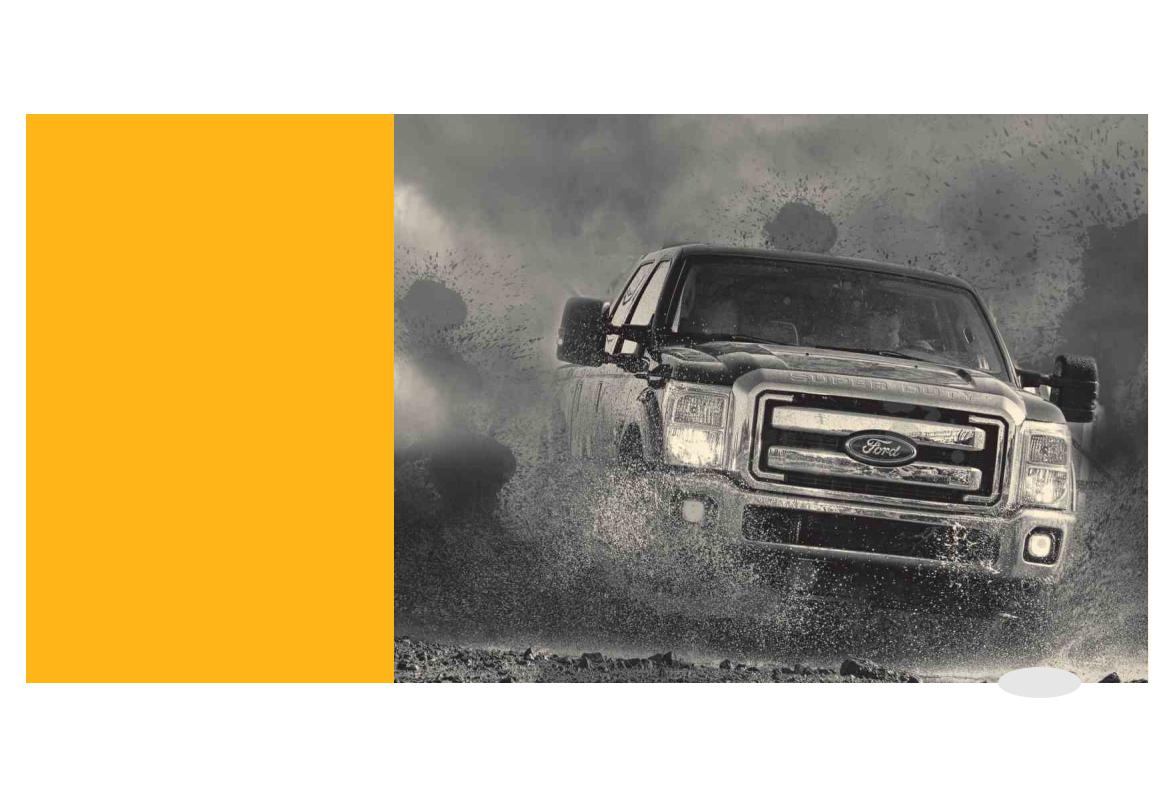
2014 SUPER DUTY Owner’s Manual
DUTY2014SUPER
Manual Owner’s
EC3J 19A321 AA | November 2013 | Third Printing | Owner’s Manual | Super Duty | Litho in U.S.A.

The information contained in this publication was correct at the time of going to print. In the interest of continuous development, we reserve the right to change specifications, design or equipment at any time without notice or obligation. No part of this publication may be reproduced, transmitted, stored in a retrieval system or translated into any language in any form by any means without our written permission. Errors and omissions excepted.
© Ford Motor Company 2013
All rights reserved.
Part Number: 20131018212854

Table of Contents
|
Introduction |
|
|
About This Manual……………………………………. |
7 |
|
Symbols Glossary……………………………………… |
7 |
|
Data Recording………………………………………….. |
9 |
|
California Proposition 65………………………… |
11 |
|
Perchlorate………………………………………………… |
11 |
|
Ford Credit…………………………………………………. |
11 |
|
Replacement Parts |
|
|
Recommendation………………………………… |
12 |
|
Special Notices………………………………………… |
12 |
|
Mobile Communications |
|
|
Equipment…………………………………………….. |
13 |
|
Export Unique Options……………………………. |
13 |
|
Child Safety |
|
|
General Information………………………………… |
15 |
|
Installing Child Seats………………………………. |
16 |
|
Booster Seats………………………………………….. |
24 |
|
Child Seat Positioning……………………………. |
26 |
|
Child Safety Locks…………………………………… |
27 |
|
Safety Belts |
|
|
Principle of Operation……………………………. |
28 |
|
Fastening the Safety Belts…………………….. |
29 |
|
Safety Belt Height Adjustment…………….. |
32 |
|
Safety Belt Warning Lamp and Indicator |
|
|
Chime…………………………………………………….. |
32 |
|
Safety Belt Minder………………………………….. |
33 |
|
Child Restraint and Safety Belt |
|
|
Maintenance………………………………………… |
35 |
|
Supplementary Restraints |
|
|
System |
|
|
Principle of Operation……………………………. |
36 |
|
Driver and Passenger Airbags……………….. |
37 |
|
Side Airbags…………………………………………….. |
42 |
|
Safety Canopy™…………………………………….. |
43 |
|
Crash Sensors and Airbag Indicator……. |
44 |
|
Airbag Disposal……………………………………….. |
45 |
|
Keys and Remote Controls |
|
|
General Information on Radio |
|
|
Frequencies…………………………………………. |
46 |
|
Remote Control………………………………………. |
46 |
|
Replacing a Lost Key or Remote |
|
|
Control………………………………………………….. |
49 |
|
MyKey™ |
|
|
Principle of Operation……………………………. |
50 |
|
Creating a MyKey……………………………………. |
50 |
|
Clearing All MyKeys………………………………… |
52 |
|
Checking MyKey System Status…………… |
52 |
|
Using MyKey With Remote Start |
|
|
Systems………………………………………………… |
52 |
|
MyKey Troubleshooting…………………………. |
53 |
|
Locks |
|
|
Locking and Unlocking…………………………… |
54 |
|
Keyless Entry……………………………………………. |
55 |
|
Security |
|
|
Passive Anti-Theft System…………………… |
58 |
|
Anti-Theft Alarm…………………………………….. |
59 |
|
Steering Wheel |
|
|
Adjusting the Steering Wheel………………. |
60 |
|
Audio Control………………………………………….. |
60 |
|
Voice Control……………………………………………. |
61 |
|
Cruise Control…………………………………………… |
61 |
|
Information Display Control…………………… |
61 |
|
Heated Steering Wheel………………………….. |
62 |
|
Pedals |
|
|
Adjusting the Pedals………………………………. |
63 |
|
Wipers and Washers |
|
|
Windshield Wipers…………………………………. |
64 |
|
Windshield Washers………………………………. |
64 |
1
Super Duty (TFA)

Table of Contents
|
Lighting |
|
|
Lighting Control………………………………………. |
65 |
|
Autolamps……………………………………………….. |
65 |
|
Instrument Lighting Dimmer………………… |
66 |
|
Daytime Running Lamps………………………. |
66 |
|
Front Fog Lamps…………………………………….. |
67 |
|
Direction Indicators…………………………………. |
67 |
|
Interior Lamps…………………………………………. |
67 |
|
Windows and Mirrors |
|
|
Power Windows……………………………………… |
69 |
|
Global Opening……………………………………….. |
70 |
|
Exterior Mirrors………………………………………… |
70 |
|
Interior Mirror……………………………………………. |
72 |
|
Sun Visors…………………………………………………. |
73 |
|
Moonroof………………………………………………….. |
73 |
|
Instrument Cluster |
|
|
Gauges………………………………………………………. |
75 |
|
Warning Lamps and Indicators……………… |
77 |
|
Audible Warnings and Indicators………… |
80 |
|
Information Displays |
|
|
General Information………………………………… |
81 |
|
Information Messages……………………………. |
92 |
|
Climate Control |
|
|
Manual Climate Control………………………. |
103 |
|
Automatic Climate Control…………………. |
104 |
|
Hints on Controlling the Interior |
|
|
Climate………………………………………………… |
105 |
|
Heated Windows and Mirrors……………… |
106 |
|
Remote Start…………………………………………. |
106 |
|
Seats |
|
|
Sitting in the Correct Position…………….. |
108 |
|
Head Restraints…………………………………….. |
108 |
|
Manual Seats………………………………………….. |
110 |
|
Power Seats……………………………………………… |
111 |
2
|
Memory Function…………………………………….. |
111 |
|
Rear Seats……………………………………………….. |
112 |
|
Heated Seats…………………………………………… |
115 |
|
Ventilated Seats…………………………………….. |
116 |
|
Front Seat Armrest…………………………………. |
117 |
|
Rear Seat Armrest………………………………….. |
118 |
|
Universal Garage Door |
|
|
Opener |
|
|
Universal Garage Door Opener……………. |
119 |
|
Auxiliary Power Points |
|
|
Auxiliary Power Points…………………………… |
127 |
|
Storage Compartments |
|
|
Center Console………………………………………. |
129 |
|
Overhead Console…………………………………. |
129 |
|
Starting and Stopping the |
|
|
Engine |
|
|
General Information……………………………… |
130 |
|
Ignition Switch……………………………………….. |
130 |
|
Starting a Gasoline Engine……………………. |
131 |
|
Engine Block Heater………………………………. |
132 |
|
Fuel and Refueling |
|
|
Safety Precautions………………………………… |
134 |
|
Fuel Quality…………………………………………….. |
135 |
|
Running Out of Fuel……………………………… |
136 |
|
Refueling…………………………………………………. |
136 |
|
Fuel Consumption…………………………………. |
138 |
|
Emission Control System…………………….. |
139 |
|
Transmission |
|
|
Automatic Transmission………………………. |
142 |
|
Power Take-Off……………………………………… |
148 |
|
Four-Wheel Drive |
|
|
Using Four-Wheel Drive……………………….. |
149 |
Super Duty (TFA)

Table of Contents
|
Rear Axle |
|
|
Limited Slip Differential……………………….. |
158 |
|
Electronic Locking Differential……………. |
158 |
|
Brakes |
|
|
General Information……………………………… |
160 |
|
Hints on Driving With Anti-Lock |
|
|
Brakes………………………………………………….. |
160 |
|
Parking Brake………………………………………….. |
161 |
|
Hill Start Assist……………………………………….. |
161 |
|
Traction Control |
|
|
Principle of Operation…………………………… |
163 |
|
Using Traction Control………………………….. |
163 |
|
Stability Control |
|
|
Principle of Operation…………………………… |
165 |
|
Using Stability Control…………………………. |
165 |
|
Terrain Response |
|
|
Principle of Operation………………………….. |
168 |
|
Using Hill Descent Control…………………… |
168 |
|
Parking Aids |
|
|
Parking Aid……………………………………………… |
170 |
|
Rear View Camera………………………………….. |
171 |
|
Cruise Control |
|
|
Principle of Operation…………………………… |
174 |
|
Using Cruise Control……………………………… |
174 |
|
Driving Aids |
|
|
Steering……………………………………………………. |
175 |
|
Load Carrying |
|
|
Load Limit……………………………………………….. |
176 |
|
Tailgate……………………………………………………. |
183 |
|
Towing |
|
|
Towing a Trailer………………………………………. |
187 |
|
Trailer Sway Control……………………………… |
188 |
|
Recommended Towing Weights………… |
188 |
|
Essential Towing Checks……………………… |
189 |
|
Towing Points………………………………………… |
196 |
|
Transporting the Vehicle………………………. |
197 |
|
Towing the Vehicle on Four Wheels…… |
198 |
|
Driving Hints |
|
|
Breaking-In……………………………………………. |
200 |
|
Economical Driving……………………………… |
200 |
|
Driving Through Water………………………….. |
201 |
|
Floor Mats………………………………………………. |
201 |
|
Snowplowing………………………………………… |
202 |
|
Roadside Emergencies |
|
|
Roadside Assistance…………………………… |
204 |
|
Hazard Warning Flashers……………………. |
205 |
|
Fuel Shutoff………………………………………….. |
205 |
|
Jump-Starting the Vehicle………………….. |
205 |
|
Post-Crash Alert System…………………….. |
207 |
|
Customer Assistance |
|
|
Getting the Services You Need………….. |
208 |
|
In California (U.S. Only)………………………. |
209 |
|
The Better Business Bureau (BBB) Auto |
|
|
Line Program (U.S. Only)…………………. |
210 |
|
Utilizing the Mediation/Arbitration |
|
|
Program (Canada Only)…………………… |
210 |
|
Getting Assistance Outside the U.S. and |
|
|
Canada…………………………………………………. |
211 |
|
Ordering Additional Owner’s |
|
|
Literature……………………………………………… |
212 |
|
Reporting Safety Defects (U.S. |
|
|
Only)…………………………………………………….. |
212 |
|
Reporting Safety Defects (Canada |
|
|
Only)…………………………………………………….. |
213 |
|
Fuses |
|
|
Changing a Fuse…………………………………….. |
214 |
3
Super Duty (TFA)

Table of Contents
|
Fuse Specification Chart………………………. |
215 |
|
Maintenance |
|
|
General Information……………………………… |
223 |
|
Opening and Closing the Hood………….. |
223 |
|
Under Hood Overview — 6.2L………………. |
224 |
|
Under Hood Overview — 6.8L………………. |
225 |
|
Engine Oil Dipstick……………………………….. |
226 |
|
Engine Oil Check…………………………………… |
226 |
|
Engine Coolant Check………………………….. |
227 |
|
Automatic Transmission Fluid |
|
|
Check……………………………………………………. |
231 |
|
Transfer Case Fluid Check…………………… |
234 |
|
Brake Fluid Check…………………………………. |
234 |
|
Power Steering Fluid Check………………… |
234 |
|
Washer Fluid Check……………………………… |
235 |
|
Fuel Filter……………………………………………….. |
235 |
|
Changing the 12V Battery……………………. |
235 |
|
Checking the Wiper Blades…………………. |
237 |
|
Changing the Wiper Blades…………………. |
237 |
|
Adjusting the Headlamps……………………. |
238 |
|
Removing a Headlamp………………………… |
239 |
|
Changing a Bulb…………………………………….. |
241 |
|
Bulb Specification Chart……………………… |
243 |
|
Changing the Engine Air Filter……………. |
245 |
|
Vehicle Care |
|
|
General Information……………………………… |
247 |
|
Cleaning Products………………………………… |
247 |
|
Cleaning the Exterior……………………………. |
247 |
|
Waxing……………………………………………………. |
248 |
|
Cleaning the Engine…………………………….. |
248 |
|
Cleaning the Exhaust…………………………… |
249 |
|
Cleaning the Windows and Wiper |
|
|
Blades…………………………………………………. |
249 |
|
Cleaning the Interior…………………………….. |
250 |
|
Cleaning the Instrument Panel and |
|
|
Instrument Cluster Lens………………….. |
250 |
|
Cleaning Leather Seats………………………… |
251 |
|
Repairing Minor Paint Damage……………. |
251 |
4
|
Cleaning the Alloy Wheels…………………… |
251 |
|
Vehicle Storage……………………………………… |
252 |
|
Wheels and Tires |
|
|
General Information…………………………….. |
254 |
|
Tire Care…………………………………………………. |
256 |
|
Using Snow Chains……………………………….. |
273 |
|
Tire Pressure Monitoring System……….. |
273 |
|
Changing a Road Wheel………………………. |
279 |
|
Technical Specifications…………………….. |
290 |
|
Capacities and Specific- |
|
|
ations |
|
|
Engine Specifications………………………….. |
292 |
|
Motorcraft Parts……………………………………. |
293 |
|
Vehicle Identification Number……………. |
294 |
|
Vehicle Certification Label………………….. |
294 |
|
Transmission Code Designation………… |
295 |
|
Technical Specifications…………………….. |
296 |
|
Audio System |
|
|
General Information……………………………… |
301 |
|
Audio unit — Vehicles With: AM/FM…… |
302 |
|
Audio unit — Vehicles With: AM/FM/CD/ |
|
|
SYNC…………………………………………………… |
303 |
|
Audio unit — Vehicles With: Sony AM/FM/ |
|
|
CD……………………………………………………….. |
305 |
|
Digital Radio………………………………………….. |
306 |
|
Satellite Radio………………………………………. |
309 |
|
Audio Input Jack……………………………………… |
311 |
|
USB Port………………………………………………….. |
312 |
|
Media Hub………………………………………………. |
312 |
|
SYNC™ |
|
|
General Information……………………………… |
313 |
|
Using Voice Recognition………………………. |
315 |
|
Using SYNC™ With Your Phone…………. |
317 |
|
SYNC™ Applications and Services…… |
328 |
|
Using SYNC™ With Your Media |
|
|
Player………………………………………………….. |
335 |
Super Duty (TFA)

Table of Contents
|
SYNC™ Troubleshooting……………………. |
343 |
|
MyFord Touch™ |
|
|
General Information…………………………….. |
349 |
|
Settings………………………………………………….. |
356 |
|
Entertainment………………………………………. |
366 |
|
Phone……………………………………………………… |
383 |
|
Information……………………………………………. |
389 |
|
Climate…………………………………………………… |
398 |
|
Navigation…………………………………………….. |
400 |
|
Accessories |
|
|
Accessories…………………………………………… |
409 |
|
Auxiliary Switches…………………………………. |
410 |
|
Appendices |
|
|
End User License Agreement………………. |
412 |
|
Ford Extended Service Plan |
|
|
(ESP) |
|
|
Ford Extended Service Plan (ESP)……. |
427 |
|
Scheduled Maintenance |
|
|
General Maintenance Information……. |
430 |
|
Normal Scheduled Maintenance………. |
433 |
|
Special Operating Conditions Scheduled |
|
|
Maintenance……………………………………… |
434 |
|
Scheduled Maintenance Record……….. |
438 |
5
Super Duty (TFA)

6
Super Duty (TFA)
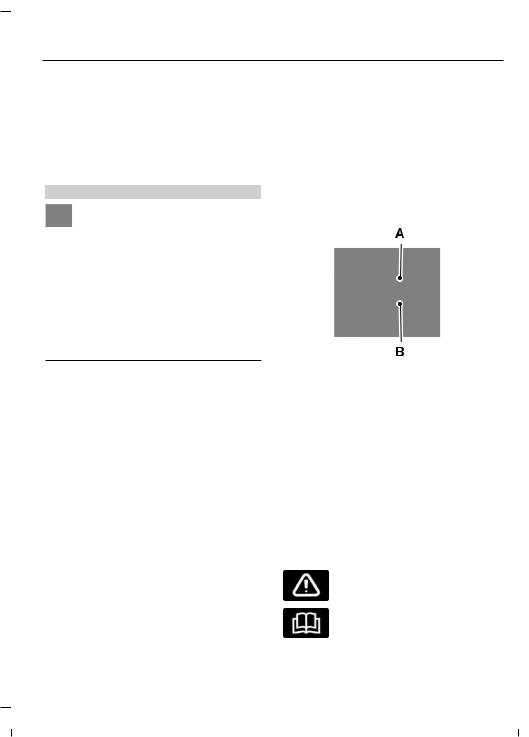
Introduction
ABOUT THIS MANUAL
Thank you for choosing Ford. We recommend that you take some time to get to know your vehicle by reading this manual. The more that you know about it, the greater the safety and pleasure you will get from driving it.
WARNING
Driving while distracted can result in loss of vehicle control, crash and injury. We strongly recommend that
you use extreme caution when using any device that may take your focus off the road. Your primary responsibility is the safe operation of your vehicle. We recommend against the use of any handheld device while driving and encourage the use of voice-operated systems when possible. Make sure you are aware of all applicable local laws that may affect the use of electronic devices while driving.
Note: This manual describes product features and options available throughout the range of available models, sometimes even before they are generally available. It may describe options not fitted to your vehicle.
Note: Some of the illustrations in this manual may be used for different models, so may appear different to you on your vehicle. However, the essential information in the illustrations is always correct.
Note: Always use and operate your vehicle in line with all applicable laws and regulations.
Note: Pass on this manual when selling your vehicle. It is an integral part of the vehicle.
7
Note: Either Ford Motor Company or an authorized Ford dealer may have originally sold this incomplete vehicle to a vehicle modifier who upfitted it. As a result, some of the options and features on this vehicle may differ from what we describe in this manual.
This manual may qualify the location of a component as left-hand side or right-hand side. The side is determined when facing forward in the seat.
E154903
A Right-hand side
BLeft-hand side
Protecting the Environment
You must play your part in protecting the environment. Correct vehicle usage and the authorized disposal of waste, cleaning and lubrication materials are significant steps toward this aim.
SYMBOLS GLOSSARY
These are some of the symbols you may see on your vehicle.
Safety alert
See Owner’s Manual
Super Duty (TFA)

Introduction
Air conditioning system
Anti-lock braking system
Avoid smoking, flames or sparks
Battery
Battery acid
Brake fluid — non petroleum based
Brake system
Cabin air filter
Check fuel cap
Child safety door lock or unlock
Child seat lower anchor
Child seat tether anchor
Cruise control
E71340
Do not open when hot
8
Engine air filter
Engine coolant
Engine coolant temperature
Engine oil
Explosive gas
Fan warning
Fasten safety belt
Front airbag
Front fog lamps
Fuel pump reset
Fuse compartment
Hazard warning flashers
Heated rear window
Heated windshield
Interior luggage compartment release
Super Duty (TFA)
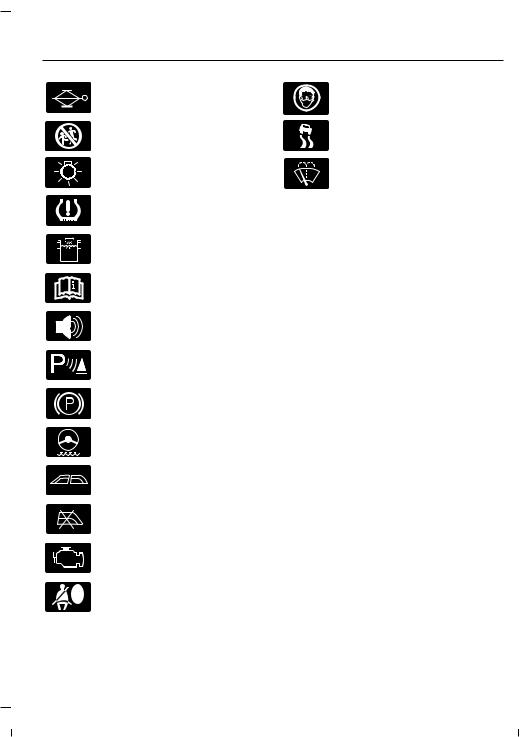
Introduction
Jack
Keep out of reach of children
Lighting control
Low tire pressure warning
Maintain correct fluid level
Note operating instructions
Panic alarm
Parking aid
E139213
Parking brake
Power steering fluid
Power windows front/rear
Power window lockout
Service engine soon
Side airbag
Shield the eyes
Stability control
Windshield wash and wipe
DATA RECORDING
Service Data Recording
Service data recorders in your vehicle are capable of collecting and storing diagnostic information about your vehicle. This potentially includes information about the performance or status of various systems and modules in the vehicle, such as engine, throttle, steering or brake systems. In order to properly diagnose and service your vehicle, Ford Motor Company, Ford of Canada, and service and repair facilities may access or share among them vehicle diagnostic information received through a direct connection to your vehicle when diagnosing or servicing your vehicle. Additionally, when your vehicle is in for service or repair, Ford Motor Company, Ford of Canada, and service and repair facilities may access or share among them data for vehicle improvement purposes. For U.S. only (if equipped), if you choose to use the SYNC Vehicle Health Report, you consent that certain diagnostic information may also be accessed electronically by Ford Motor Company and Ford authorized service facilities, and that the diagnostic information may be used for any purpose. See SYNC™ (page 313).
9
Super Duty (TFA)

Introduction
Event Data Recording
This vehicle is equipped with an event data recorder. The main purpose of an event data recorder is to record, in certain crash or near crash-like situations, such as an airbag deployment or hitting a road obstacle; this data will assist in understanding how a vehicle’s systems performed. The event data recorder is designed to recorddatarelatedtovehicledynamics and safety systems for a short period of time, typically 30 seconds or less.
The event data recorder in this vehicle is designed to record such data as:
Note: Event data recorder data is recorded by your vehicle only if a non-trivialcrashsituationoccurs;nodata is recorded by the event data recorder under normal driving conditions and no personal data or information (e.g.,name, gender, age, and crash location) is recorded (see limitations regarding 911 Assist and Traffic, directions and Information privacy below). However, parties, such as law enforcement, could combine the event data recorder data with the type of personally identifying data routinely acquired during a crash investigation.
To read data recorded by an event data
•Howvarioussystemsinyourvehicle recorder,specialequipmentisrequired,
were operating;
•Whether or not the driver and passenger safety belts were buckled/fastened;
•How far (if at all) the driver was depressing the accelerator and/or the brake pedal; and
•How fast the vehicle was traveling; and
•Where the driver was positioning the steering wheel.
This data can help provide a better understandingofthecircumstancesin which crashes and injuries occur.
and access to the vehicle or the event data recorder is needed. In addition to the vehicle manufacturer, other parties, such as law enforcement, that havesuchspecialequipment,canread the information if they have access to the vehicle or the event data recorder. Ford Motor Company and Ford of Canada do not access event data recorderinformationwithoutobtaining consent,unlesspursuanttocourtorder or where required by law enforcement, other government authorities or other third parties acting with lawful authority. Other parties may seek to access the information independently of Ford Motor Company and Ford of Canada.
10
Super Duty (TFA)

Introduction
Note: Including to the extent that any law pertaining to Event Data Recorders applies to SYNC or its features, please note the following: Once 911 Assist (if equipped) is enabled (set ON),911 Assist may, through any paired and connected cell phone, disclose to emergency services that the vehicle has been in a crash involving the deployment of an airbag or, in certain vehicles, the activation of the fuel pump shut-off. Certain versions or updates to 911 Assist may also be capable of being used to electronically or verbally provide to 911 operators the vehicle location (such as latitude and longitude), and/or other details about the vehicle or crash or personal information about the occupants to assist 911 operators to providethe most appropriateemergency services. If you do not want to disclose this information, do not activate the 911 Assist feature. See SYNC™(page 313).
Additionally, when you connect to Traffic, Directions and Information (if equipped, U.S. only), the service uses GPS technology and advanced vehicle sensors to collect the vehicle’s current location, travel direction, and speed (“vehicle travel information”), only to help provide you with the directions, traffic reports, or business searches that you request. If you do not want Ford or its vendors to receive this information, do not activate the service. Ford Motor Company and the vendorsitusestoprovideyouwiththis information do not store your vehicle travel information. For more information,seeTraffic,Directionsand Information, Terms and Conditions.
See SYNC™ (page 313).
11
CALIFORNIAPROPOSITION65
WARNING
Some constituents of engine exhaust, certain vehicle components, certain fluids contained in vehicles
and certain products of component wear contain or emit chemicals known to the State of California to cause cancer and birth defects or other reproductive harm.
PERCHLORATE
Certain components in your vehicle such as airbag modules, safety belt pretensioners and remote control batteries may contain perchlorate material. Special handling may apply for service or vehicle end of life disposal. For more information visit:
Web Address
www.dtsc.ca.gov/hazardouswaste/ perchlorate
FORD CREDIT
(U.S. Only)
Ford Credit offers a full range of financing and lease plans to help you acquire your vehicle. If you have financed or leased your vehicle through Ford Credit, thank you for your business.
For your convenience we offer a number of ways to contact us, as well as help manage your account.
Phone: 1-800-727-7000
For more information regarding Ford Credit, as well as access Account Manager, please go to www.fordcredit.com.
Super Duty (TFA)

Introduction
REPLACEMENT PARTS
RECOMMENDATION
Your vehicle has been built to the highest standards using quality parts. We recommend that you demand the use of genuine Ford and Motorcraft parts whenever your vehicle requires scheduled maintenance or repair. You can clearly identify genuine Ford and Motorcraft parts by looking for the Ford, FoMoCo or Motorcraft branding on the parts or their packaging.
Scheduled Maintenance and
Mechanical Repairs
One of the best ways for you to make sure that your vehicle provides years of service is to have it maintained in line with our recommendations using parts that conform to the specifications detailed in this Owner’s Manual. Genuine Ford and Motorcraft parts meet or exceed these specifications.
Collision Repairs
We hope that you never experience a collision,but accidents do happen.Genuine Ford replacement collision parts meet our stringent requirements for fit, finish, structural integrity, corrosion protection and dent resistance. During vehicle development we validate these parts deliver the intended level of protection as a whole system. A great way to know for sure you are getting this level of protection is to use genuine Ford replacement collision parts.
12
Warranty on Replacement Parts
Genuine Ford and Motorcraft replacement parts are the only replacement parts that benefit from a Ford Warranty. Damage caused to your vehicle as a result of the failure of non-Ford parts may not be covered by the Ford Warranty. For additional information, refer to the terms and conditions of the Ford Warranty.
SPECIAL NOTICES
New Vehicle Limited Warranty
For a detailed description of what is covered and what is not covered by your vehicle’s New Vehicle Limited Warranty, refer to the Warranty Manual that is provided to you along with your Owner’s Manual.
Special Instructions
For your added safety, your vehicle is fitted with sophisticated electronic controls.
WARNINGS
Failure to follow the specific warnings and instructions could result in personal injury. See
Supplementary Restraints System
(page 36).
Front seat mounted rear-facing child or infant seats should NEVER be placed in front of an active
passenger airbag.
Using your Vehicle with a
Snowplow
More information and guidelines for using your vehicle with a snowplow in this Owner’sManual.SeeSnowplowing(page 202).
Super Duty (TFA)

Introduction
Using your Vehicle as an
Ambulance
If your light truck is equipped with the Ford Ambulance Preparation Package, it may be utilized as an ambulance. Ford urges ambulance manufacturers to follow the recommendations of the Ford Incomplete Vehicle Manual, Ford Truck Body Builder’s Layout Book and the Qualified Vehicle Modifiers (QVM) Guidelines as well as pertinent supplements. For additional information, please contact the Truck Body Builders Advisory Service at http://www.fleet.ford.com/truckbbas/ and then by selecting Contact Us or by phone at 1–877–840–4338.
Use of your Ford light truck as an ambulance, without the Ford Ambulance Preparation Package voids the Ford New Vehicle Limited Warranty and may void the emissions warranties. In addition, ambulance usage without the preparation package could cause high underbody temperatures, overpressurized fuel and a risk of spraying fuel which could lead to fires.
If your vehicle is equipped with the Ford Ambulance Preparation Package, it will be indicated on the Safety Compliance Certification Label. The label is located on the driver’s side door pillar or on the rear edge of the driver’s door. You can determine whether the ambulance manufacturer followed Ford’s recommendations by directly contacting that manufacturer. Ford Ambulance Preparation Package is only available on certain Diesel engine equipped vehicles.
Using your Vehicle as a Stationary Power Source
Information and guidelines for operating a vehicle equipped with an aftermarket power take-off system can be found in this Owner’s Manual. See Power Take-Off (page 148).
MOBILE COMMUNICATIONS EQUIPMENT
Using mobile communications equipment is becoming increasingly important in the conduct of business and personal affairs. However, you must not compromise your own or others’ safety when using such equipment. Mobile communications can enhance personal safety and security when appropriately used, particularly in emergency situations. Safety must be paramount when using mobile communications equipment to avoid negating these benefits. Mobile communication equipment includes, but is not limited to, cellular phones, pagers, portable email devices, text messaging devices and portable two-way radios.
WARNING
Driving while distracted can result in loss of vehicle control, crash and injury. We strongly recommend that
you use extreme caution when using any device that may take your focus off the road. Your primary responsibility is the safe operation of your vehicle. We recommend against the use of any hand-held device while driving and encourage the use of voice-operated systems when possible. Make sure you are aware of all applicable local laws that may affect the use of electronic devices while driving.
EXPORT UNIQUE OPTIONS
For your particular global region, your vehicle may be equipped with features and options that are different from the features and options that are described in this Owner’s Manual. A market unique supplement may be supplied that complements this book. By referring to the market unique supplement, if provided, you can properly identify those features, recommendations and specifications that
13
Super Duty (TFA)

Introduction
are unique to your vehicle. This Owner’s Manual is written primarily for the U.S. and Canadian Markets. Features or equipment listed as standard may be different on units built for Export. Refer to this Owner’s
Manual for all other required information and warnings.
14
Super Duty (TFA)

Child Safety
GENERAL INFORMATION
See the following sections for directions on how to properly use safety restraints for children.
WARNINGS
Always make sure your child is secured properly in a device that is appropriate for their height, age and
weight. Child safety restraints must be bought separately from your vehicle. Failure to follow these instructions and guidelines may result in an increased risk of serious injury or death to your child.
All children are shaped differently. The recommendations for safety restraints are based on probable
child height, age and weight thresholds from National Highway Traffic Safety Administration and other safety organizations, or are the minimum
WARNINGS
requirements of law. Ford recommends checking with a NHTSA Certified Child Passenger Safety Technician (CPST) and consult your pediatrician to make sure your child seat is appropriate for your child, and is compatible with and properly installed in your vehicle. To locate a child seat fitting station and CPST, contact the NHTSA toll free at 1-888-327-4236 or go to http://www.nhtsa.dot.gov. In Canada, check with your local St. John Ambulance office for referral to a CPST or for further information, contact your provincial ministry of transportation, locate your local St. John Ambulance office by searching for St. John Ambulance on the internet, or Transport Canada at 1-800-333-0371 (http://www.tc.gc.ca). Failure to properly restrain children in safety seats made especially for their height, age, and weight may result in an increased risk of serious injury or death to your child.
15
Super Duty (TFA)

Child Safety
Recommendations for Safety Restraints for Children
|
Child |
Child size, height, weight, or age |
Recommended restraint |
|
type |
||
|
Infants or |
Children weighing 40 lb (18 kg) or less |
Use a child safety seat |
|
toddlers |
(generally age four or younger). |
(sometimes called an |
|
infant carrier, convertible |
||
|
seat, or toddler seat). |
||
|
Small children |
Children who have outgrown or no longer |
Use a belt-positioning |
|
properly fit in a child safety seat (gener- |
booster seat. |
|
|
ally children who are less than 4 ft. 9 in. |
||
|
(1.45 m) tall, are greater than age four |
||
|
and less than age 12, and between 40 lb |
||
|
(18 kg) and 80 lb (36 kg) and upward to |
||
|
100 lb (45 kg) if recommended by your |
||
|
child restraint manufacturer). |
||
|
Larger children |
Children who have outgrown or no longer |
Use a vehicle safety belt |
|
properly fit in a belt-positioning booster |
having the lap belt snug |
|
|
seat (generally children who are at least |
and low across the hips, |
|
|
4 ft. 9 in. (1.45 m) tall or greater than 80 |
shoulder belt centered |
|
|
lb (36 kg) or 100 lb (45 kg) if recom- |
across the shoulder and |
|
|
mended by child restraint manufacturer). |
chest, and seat back |
|
|
upright. |
•You are required by law to properly use safety seats for infants and toddlers in the United States and Canada.
•Many states and provinces require that small children use approved booster seats until they reach age eight, a height of 4 feet 9 inches (1.45 meters) tall, or 80 pounds (36 kilograms). Check your local and state or provincial laws for specific requirements about the safety of children in your vehicle.
•When possible, always properly restrain children 12 years of age and under in a rear seating position of your vehicle. Accident statistics suggest that children are safer when properly restrained in the rear seating positions than in a front seating position.
INSTALLING CHILD SEATS
Child Seats
E142594
16
Super Duty (TFA)
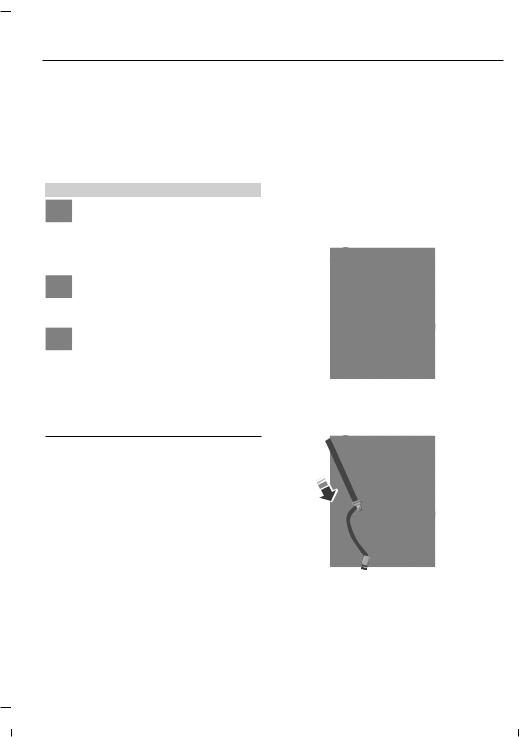
Child Safety
Use a child safety seat (sometimes called an infant carrier, convertible seat, or toddler seat) for infants, toddlers, or children weighing 40 pounds (18 kilograms) or less (generally age four or younger).
Using Lap and Shoulder Belts
WARNINGS
Airbags can kill or injure a child in a child seat. Never place a rear-facing child seat in front of an active airbag.
If you must use a forward-facing child seat in the front seat, move the seat upon which the child seat is installed all the way back.
Airbags can kill or injure a child in a child seat. Children 12 and under should be properly restrained in the
rear seat whenever possible.
Depending on where you secure a child restraint, and depending on the child restraint design, you may block
access to certain safety belt buckle assemblies and LATCH lower anchors, rendering those features potentially unusable. To avoid risk of injury, occupants should only use seating positions where they are able to be properly restrained.
When installing a child safety seat with combination lap and shoulder belts:
•Use the correct safety belt buckle for that seating position.
•Insert the belt tongue into the proper buckle until you hear a snap and feel it latch. Make sure the tongue is securely fastened in the buckle.
•Keep the buckle release button pointing up and away from the safety seat, with the tongue between the child seat and the release button, to prevent accidental unbuckling.
17
•Place the vehicle seat upon which the child seat will be installed in the upright position.
•This vehicle does not require the use of a locking clip.
Perform the following steps when installing the child seat with combination lap and shoulder belts:
Note: Although the child seat illustrated is a forward facing child seat, the steps are the same for installing a rear facing child seat.
E142528
1.Position the child safety seat in a seat with a combination lap and shoulder belt.
E142529
2.Pull down on the shoulder belt and then grasp the shoulder belt and lap belt together.
Super Duty (TFA)

Child Safety
E142530
3.While holding the shoulder and lap belt portions together, route the tongue through the child seat according to the child seat manufacturer’s instructions. Be sure the belt webbing is not twisted.
E142875
5.To put the retractor in the automatic locking mode, grasp the shoulder portion of the belt and pull downward until all of the belt is pulled out.
6.Allow the belt to retract to remove slack. The belt will click as it retracts to indicate it is in the automatic locking mode.
7.Try to pull the belt out of the retractor to make sure the retractor is in the automatic locking mode (you should not be able to pull more belt out). If the retractor is not locked, unbuckle the belt and repeat Steps 5 and 6.
E142531
4. Insert the belt tongue into the proper buckle (the buckle closest to the direction the tongue is coming from) for that seating position until you hear a snap and feel the latch engage. Make sure the tongue is latched securely by pulling on it.
E142533
8. Remove remaining slack from the belt. Force the seat down with extra weight, for example, by pressing down or kneeling on the child restraint while pulling up on the shoulder belt in order to force slack from the belt. This is necessary to remove the remaining slack that will exist once the extra
18
Super Duty (TFA)
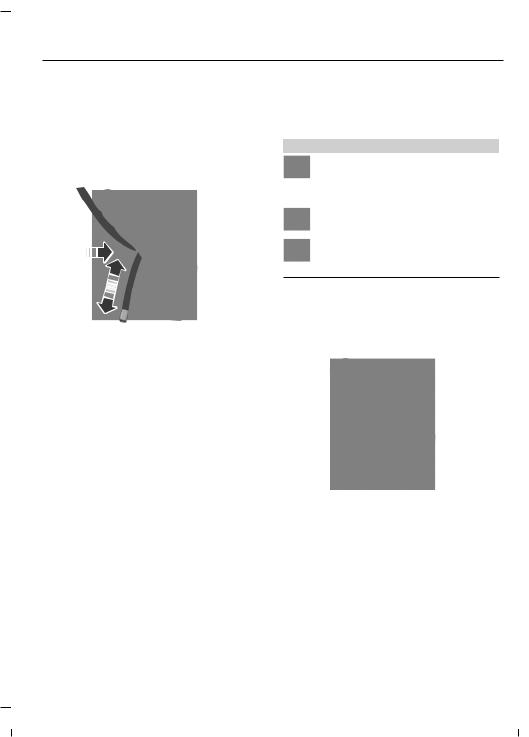
Child Safety
weight of the child is added to the child restraint. It also helps to achieve the proper snugness of the child seat to your vehicle. Sometimes, a slight lean toward the buckle will help to remove remaining slack from the belt.
9.Attach the tether strap (if the child seat is equipped).
E142534
10.Before placing the child in the seat, forcibly move the seat forward and back to make sure the seat is securely held in place.
To check this, grab the seat at the belt path and attempt to move it side to side and forward and back. There should be no more than 1 inch (2.5 centimeters) of movement for proper installation.
Ford recommends checking with a NHTSA Certified Child Passenger Safety Technician to make certain the child restraint is properly installed. In Canada, check with your local St. John Ambulance office for referral to a Certified Passenger Seat Technician.
19
Using Cinch Tongue Lap and
Shoulder Belts (All Front Center,
Super Cab and Crew Cab Rear
Center Positions)
WARNINGS
Airbags can kill or injure a child in a child seat. If you must use a forward-facing child seat in the front
seat, move seat all the way back.
Rear facing child seats should never be placed in front of an active airbag.
Always use both lap and shoulder safety belt in the Regular Cab center seating position if applicable.
The belt webbing below the tongue is the lap portion of the combination lap and shoulder belt, and the belt webbing above the tongue is the shoulder belt portion of the combination lap and shoulder belt.
E142528
1.Position the child safety seat in the front center seat.
Super Duty (TFA)
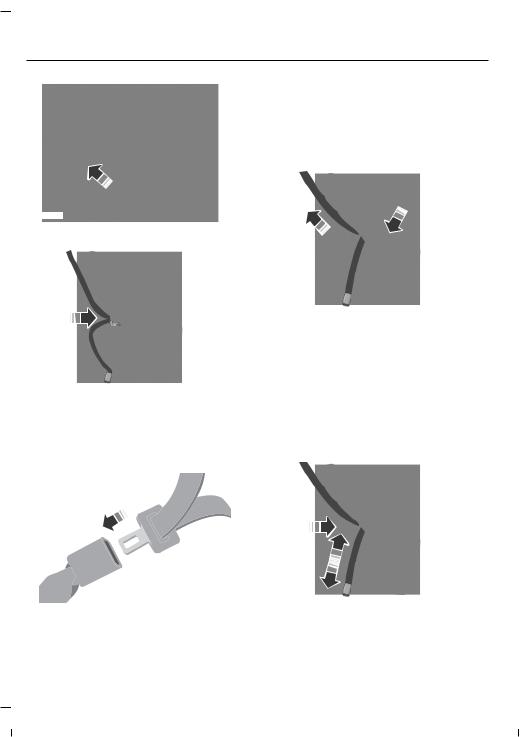
Child Safety
E162708
2. Slide the tongue up the webbing.
E142530
3.While holding both shoulder and lap portions next to the tongue, route the tongue and webbing through the child seat according to the child seat manufacturer’s instructions. Be sure that the belt webbing is not twisted.
E142531
4.Insert the belt tongue into the proper buckle (the buckle closest to the direction the tongue is coming from) for that seating position until you hear a snap and feel the latch engage. Make sure the tongue is latched securely by pulling on it.
E142533
5.While pushing down with your knee on the child seat pull up on the shoulder belt portion to tighten the lap belt portion of the combination lap and shoulder belt.
6.Allow the safety belt to retract and remove any slack in the belt to securely tighten the child safety seat in the vehicle.
7.Attach the tether strap (if the child seat is equipped).
E142534
20
Super Duty (TFA)
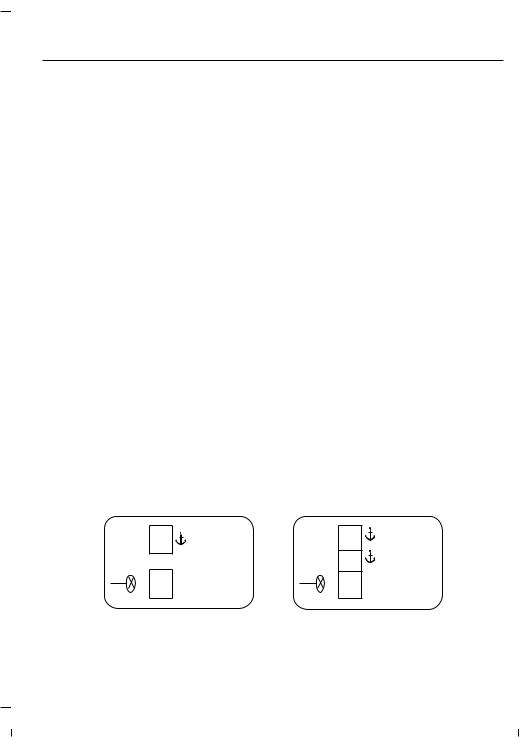
Child Safety
8.Before placing the child in the seat, forcibly move the seat forward and back to make sure the seat is securely held in place. To check this, grab the seat at the belt path and attempt to move it side to side and forward and back. There should be no more than 1 inch (2.5 centimeters) of movement for proper installation.
9.Check from time to time to be sure that there is no slack in the lap and shoulder belt. The shoulder belt must be snug to keep the lap belt tight during a crash.
Ford recommends checking with a NHTSA Certified Child Passenger Safety Technician to make certain the child restraint is properly installed. In Canada, check with your local St. John Ambulance office for referral to a Child Passenger Safety Technician.
Using Lower Anchors and Tethers for CHildren (LATCH)
The LATCH system is composed of three vehicle anchor points: two lower anchors located where the vehicle seatback and seat cushion meet (called the seat bight) and one top tether anchor located behind that seating position. Your vehicle is not equipped with the lower anchor points in the seat bight. For this vehicle, use the vehicle safety belt and upper tether to secure a child seat.
Using Tether Straps
Many forward-facing child safety seats include a tether strap which extends from the back of the child safety seat and hooks to an anchoring point called the top tether anchor. Tether straps are available as an accessory for many older safety seats. Contact the manufacturer of your child seat for information about ordering a tether strap, or to obtain a longer tether strap if the tether strap on your safety seat does not reach the appropriate top tether anchor in the vehicle.
The passenger seats of your vehicle may be equipped with built-in tether strap anchors located behind the seats as described below.
The tether anchors in your vehicle may be straps on the seat back or an anchor bracket mounted to the body shell on the back panel.
The SuperCab rear seat has three straps behind the top of the seatback that function as both routing loops for the tether straps and anchor loops.
The tether strap anchors in your vehicle are in the following positions (shown from top view):
Super Duty (TFA)

Child Safety
F-Series Regular Cab
E162710
F-Series SuperCab
E162711
F-Series Crew Cab
Attach the tether strap only to the appropriate tether anchor as shown. The tether strap may not work properly if attached somewhere other than the correct tether anchor.
Once the child safety seat has been installed using the safety belt, you can attach the top tether strap.
Tether Strap Attachment
1.Route the child safety seat tether strap over the back of the seat.
22
Note: For vehicles with adjustable head restraints, route the tether strap under the head restraint and between the head restraint posts, otherwise route the tether strap over the top of the seat back. If the top of the safety seat hits the head restraint, raise the head restraint to let the child seat fit further rearward.
2.Locate the correct anchor for the selected seating position.
3.You may need to pull the seatback forward to access the tether anchors. Make sure the seat is locked in the upright position before installing the child seat.
Super Duty (TFA)
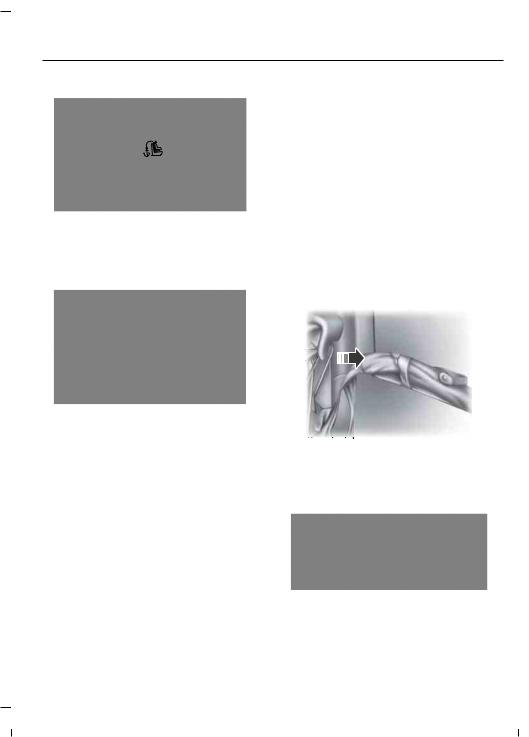
Child Safety
E162712
4.Remove the tether cover.
5.Clip the tether strap to the anchor as shown.
E162713
Front seats (Regular Cab) and Rear seats (Crew Cab)
If the tether strap is clipped incorrectly, the child safety seat may not be retained properly in the event of a crash.
6. Tighten the child safety seat tether strap according to the manufacturer’s instructions.
If the safety seat is not anchored properly, the risk of a child being injured in a crash greatly increases.
If your child restraint system is equipped with a tether strap, and the child restraint manufacturer recommends its use, Ford also recommends its use.
23
Tether Strap Attachment (Rear
SuperCab Only)
There are three loops of webbing just above the back of the rear seat (along the bottom edge of the rear window) in the SuperCab. Use these loops as both routing loops and anchor loops for up to three child safety seat tether straps.
You can secure these straps below the back of the seat with rubber bands. To access, reach below the back of the seat and pull the tether loop out of the rubber band securing it.
Many tether straps cannot be tightened if the tether strap is hooked to the loop directly behind the child seat. To provide a tight tether strap:
E162714
1.Route the tether strap through the loop directly behind the child seat.
E162715
Super Duty (TFA)
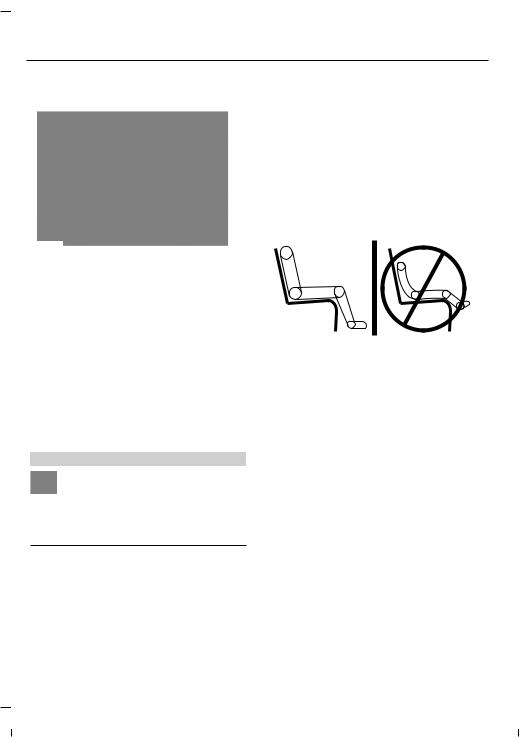
Child Safety
2.Attach the strap hook onto the loop behind an adjacent seating position.
E162716
3.Install the child safety seat tightly using the vehicle belts. Follow the instructions in this chapter.
4.Tighten the tether strap according to the child seat manufacturer’s instructions.
You can use a single loop to route and anchor more than one child seat. For example, use the center loop as a routing loop for a child safety seat in the center rear seat and as an anchoring loop for child seats installed in the outboard rear seats.
80 pounds (36 kilograms) and upward to
100 pounds (45 kilograms) if recommended by your child restraint manufacturer). Many state and provincial laws require that children use approved booster seats until they reach age eight, a height of 4 feet 9 inches (1.45 meters) tall, or 80 pounds (36 kilograms).
Booster seats should be used until you can answer YES to ALL of these questions when seated without a booster seat:
E142595
•Can the child sit all the way back against their vehicle seat back with knees bent comfortably at the edge of the seat cushion?
BOOSTER SEATS
WARNING
Never place, or allow a child to place, the shoulder belt under a child’s arm or behind the back because it
reduces the protection for the upper part of the body and may increase the risk of injury or death in a crash.
Use a belt-positioning booster seat for children who have outgrown or no longer properly fit in a child safety seat (generally children who are less than 4 feet 9 inches (1.45 meters) tall, are greater than age four
(4) and less than age twelve (12), and between 40 pounds (18 kilograms) and
•Can the child sit without slouching?
•Does the lap belt rest low across the hips?
•Is the shoulder belt centered on the shoulder and chest?
•Can the child stay seated like this for the whole trip?
Always use booster seats in conjunction with your vehicle lap and shoulder belt.
24
Super Duty (TFA)
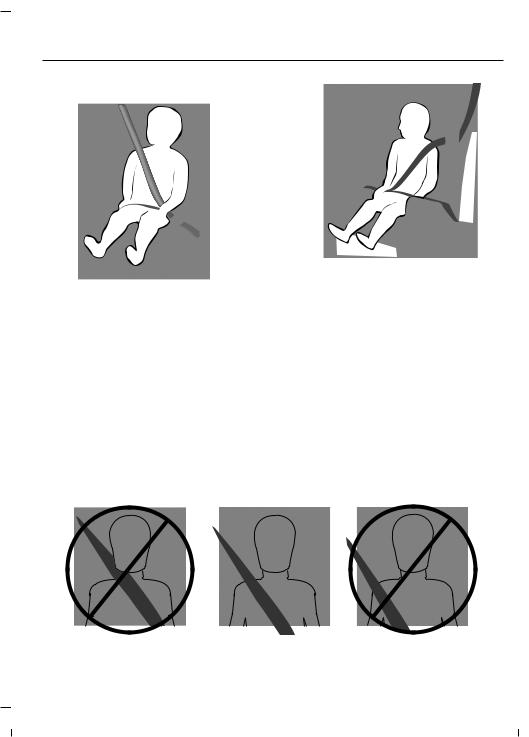
Child Safety
Types of Booster Seats
E68924
•Backless booster seats
If your backless booster seat has a removable shield, remove the shield. If a vehicle seating position has a low seat back or no head restraint, a backless booster seat may place your child’s head (as measured at the tops of the ears) above the top of the seat. In this case, move the backless booster to another seating position with a higher seat back or head restraint and lap and shoulder belts, or consider using a high back booster seat.
E70710
•High back booster seats
If, with a backless booster seat, you cannot find a seating position that adequately supports your child’s head, a high back booster seat would be a better choice.
Children and booster seats vary in size and shape. Choose a booster that keeps the lap belt low and snug across the hips, never up across the stomach, and lets you adjust the shoulder belt to cross the chest and rest snugly near the center of the shoulder. The following drawings compare the ideal fit (center) to a shoulder belt uncomfortably close to the neck and a shoulder belt that could slip off the shoulder. The drawings also show how the lap belt should be low and snug across the child’s hips.
Super Duty (TFA)

Child Safety
E142597
If the booster seat slides on the vehicle seat upon which it is being used, placing a rubberized mesh sold as shelf or carpet liner under the booster seat may improve this condition. Do not introduce any item thicker than this under the booster seat. Check with the booster seat manufacturer’s instructions.
CHILD SEAT POSITIONING
WARNINGS
Airbags can kill or injure a child in a child seat. Never place a rear-facing child seat in front of an active airbag.
If you must use a forward-facing child seat in the front seat, move the vehicle seat upon which the child seat is installed all the way back. When possible, all children age 12 and under should be properly restrained in a rear seating position. If all children cannot be seated and restrained properly in a rear seating position, properly restrain the largest child in the front seat.
Always carefully follow the instructions and warnings provided by the manufacturer of any child
restraint to determine if the restraint device is appropriate for your child’s size, height, weight, or age. Follow the child restraint manufacturer’s instructions and warnings provided for installation and use in conjunction with the instructions and
26
WARNINGS
warnings provided by your vehicle manufacturer. A safety seat that is improperly installed or utilized, is inappropriate for your child’s height, age, or weight or does not properly fit the child may increase the risk of serious injury or death.
Never let a passenger hold a child on his or her lap while your vehicle is moving. The passenger cannot
protect the child from injury in a crash, which may result in serious injury or death.
Never use pillows, books, or towels to boost a child. They can slide around and increase the likelihood
of injury or death in a crash.
Always restrain an unoccupied child seat or booster seat. These objects may become projectiles in a crash or
sudden stop, which may increase the risk of serious injury.
Never place, or allow a child to place, the shoulder belt under a child’s arm or behind the back because it
reduces the protection for the upper part of the body and may increase the risk of injury or death in a crash.
To avoid risk of injury, do not leave children or pets unattended in your vehicle.
Super Duty (TFA)
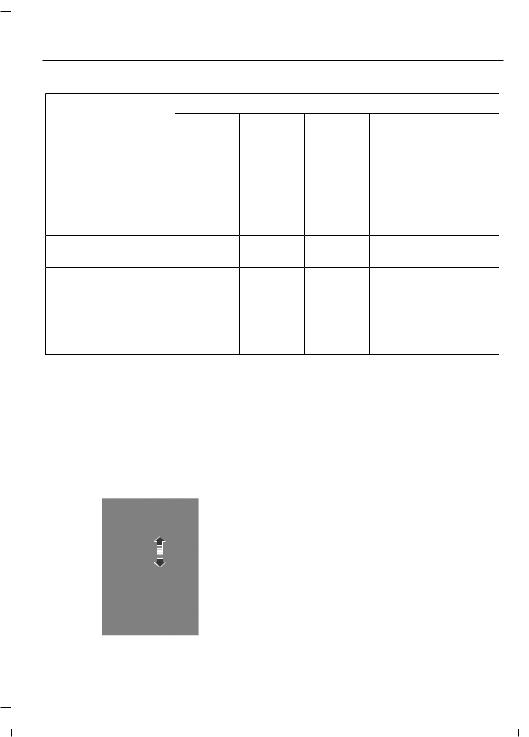
Child Safety
Restraint Combined Type child and
seat weight
Use any attachment method as indicated below by X
|
LATCH |
LATCH |
Safety belt |
Safety belt |
Safety belt |
|
(lower |
(lower |
and top |
and LATCH |
only |
|
anchors |
anchors |
tether |
(lower |
|
|
and top |
only) |
anchor |
anchors |
|
|
tether |
and top |
|||
|
anchor) |
tether |
|||
|
anchor) |
|
Rear facing |
Up to 65 lb |
X |
|
child seat |
(29 kg) |
|
|
Rear facing |
Over 65 lb |
X |
|
child seat |
(29 kg) |
|
|
Forward |
Up to 65 lb |
X |
|
facing |
(29 kg) |
|
|
child seat |
||
|
Forward |
Over 65 lb |
X |
|
facing |
(29 kg) |
|
|
child seat |
Note: The child seat must rest tightly against the vehicle seat upon which it is installed. It may be necessary to lift or remove the head restraint. See Head Restraints (page 108).
CHILD SAFETY LOCKS
When these locks are set, the rear doors cannot be opened from the inside.
The childproof locks are located on the rear edge of each rear door. You must set the lock separately for each door.
Move the lock control up or down to engage or disengage the childproof lock.
Super Duty (TFA)

Safety Belts
PRINCIPLE OF OPERATION
WARNINGS
Always drive and ride with your seat back upright and the lap belt snug and low across the hips.
To reduce the risk of injury, make sure children sit where they can be properly restrained.
Never let a passenger hold a child on his or her lap while the vehicle is moving. The passenger cannot
protect the child from injury in a crash.
All occupants of the vehicle, including the driver, should always properly wear their safety belts, even
when an airbag supplemental restraint system is provided. Failure to properly wear your safety belt could seriously increase the risk of injury or death.
It is extremely dangerous to ride in a cargo area, inside or outside of a vehicle. In a crash, people riding in
these areas are more likely to be seriously injured or killed. Do not allow people to ride in any area of your vehicle that is not equipped with seats and safety belts. Be sure everyone in your vehicle is in a seat and using a safety belt properly.
In a rollover crash, an unbelted person is significantly more likely to die than a person wearing a safety
belt.
Each seating position in your vehicle has a specific safety belt assembly which is made up of one buckle and
one tongue that are designed to be used as a pair. 1) Use the shoulder belt on the outside shoulder only. Never wear the shoulder belt under the arm. 2) Never swing the safety belt around your neck over the inside shoulder. 3) Never use a single belt for more than one person.
28
WARNINGS
When possible, all children 12 years old and under should be properly restrained in a rear seating position.
Failure to follow this could seriously increase the risk of injury or death.
Safety belts and seats can become hot in a vehicle that has been closed up in sunny weather; they could burn
a small child. Check seat covers and buckles before you place a child anywhere near them.
Front and rear seat occupants, including pregnant women, should wear safety belts for optimum
protection in an accident.
All seating positions in this vehicle have lap and shoulder safety belts. All occupants of the vehicle should always properly wear their safety belts, even when an airbag supplemental restraint system is provided.
The safety belt system consists of:
•lap and shoulder safety belts.
•shoulder safety belt with automatic locking mode, (except driver safety belt).
•height adjuster at the front outboard seating positions.
•safety belt pretensioner at the front outboard seating positions.
•Safety belt warning light and chime.
•Crash sensors and monitoring system with readiness indicator.
Super Duty (TFA)

Safety Belts
The safety belt pretensioners at the front seating positions are designed to tighten the safety belts when activated. In frontal and near-frontal crashes, side crashes and rollovers, the safety belt pretensioners may be activated alone or, if the crash is of sufficient severity, together with the front airbags.
FASTENING THE SAFETY BELTS
The front outboard and rear safety restraints in the vehicle are combination lap and shoulder belts.
2.To unfasten, press the release button and remove the tongue from the buckle.
Using the Safety Belt with Cinch Tongue (Front Center and Rear Center Seats Only)
The cinch tongue will slide up and down the belt webbing when the belt is stowed or while putting safety belts on. When the lap and shoulder safety belt is buckled, the cinch tongue will allow the lap portion to be shortened, but pinches the webbing to keep the lap portion from getting longer.
The cinch tongue is designed to slip during a crash, so always wear the shoulder belt properly and do not allow any slack in either the lap or shoulder portions.
Before you can reach and latch a lap and shoulder belt having a cinch tongue into the buckle, you may have to lengthen the lap belt portion of it.
E142587
1.Insert the belt tongue into the proper buckle (the buckle closest to the direction the tongue is coming from) until you hear a snap and feel it latch. Make sure the tongue is securely fastened in the buckle.
E162708
1.To lengthen the lap belt, pull some webbing out of the shoulder belt retractor.
2.While holding the webbing below the tongue, grasp the tip (metal portion) of the tongue so that it is parallel to the webbing and slide the tongue upward.
3.Provide enough lap belt length so that the tongue can reach the buckle.
Super Duty (TFA)

Safety Belts
Fastening the Cinch Tongue
WARNING
The lap belt should fit snugly and as low as possible around the hips, not across the waist.
1. Pull the lap and shoulder belt from the retractor so that the shoulder belt portion of the safety belt crosses your
shoulder and chest.
E142590
2.Be sure the belt is not twisted. If the belt is twisted, remove the twist.
3.Insert the belt tongue into the proper buckle for your seating position until you hear a snap and feel it latch.
4.Make sure the tongue is securely fastened to the buckle by pulling on the tongue.
While you are fastened in the safety belt, the lap and shoulder belt with a cinch tongue adjusts to your movement. However, if you brake hard, turn hard, or if your vehicle receives an impact of 5 mph (8 km/h) or more, the safety belt will become locked and help reduce your forward movement.
Restraint of Pregnant Women
WARNING
Always ride and drive with your seat back upright and the safety belt properly fastened. The lap portion of
the safety belt should fit snug and be positioned low across the hips. The shoulder portion of the safety belt should be positioned across the chest. Pregnant women should also follow this practice. See the following figure.
30
Pregnant women should always wear their safety belt. Position the lap belt portion of a combination lap and shoulder belt low across the hips below the belly and worn as tight as comfort will allow. Position the shoulder belt to cross the middle of the shoulder and the center of the chest.
Safety Belt Locking Modes
WARNINGS
After any vehicle crash, the safety belt system at all passenger seating positions must be checked by an
authorized dealer to verify that the automatic locking retractor feature for child seats is still functioning properly. In addition, all safety belts should be checked for proper function.
The belt and retractor must be replaced if the safety belt assembly automatic locking retractor feature
or any other safety belt function is not operating properly when checked by an authorized dealer. Failure to replace the belt and retractor assembly could increase the risk of injury in crashes.
Super Duty (TFA)

Safety Belts
All safety restraints in the vehicle are combination lap and shoulder belts. The driver safety belt has the first type of locking mode. The front outboard passenger and rear outboard seat safety belts have both types of locking modes described as follows:
Vehicle Sensitive Mode
This is the normal retractor mode, which allows free shoulder belt length adjustment to your movements and locking in response to vehicle movement. For example, if the driver brakes suddenly or turns a corner sharply, or the vehicle receives an impact of approximately 5 mph (8 km/h) or more, the combination safety belts will lock to help reduce forward movement of the driver and passengers.
In addition, the retractor is designed to lock if the webbing is pulled out too quickly. If this occurs, let the belt retract slightly and pull webbing out again in a slow and controlled manner.
How to Use the Automatic Locking Mode
E142591
1.Buckle the combination lap and shoulder belt.
2.Grasp the shoulder portion and pull downward until the entire belt is pulled out.
Allow the belt to retract. As the belt retracts, you will hear a clicking sound. This indicates the safety belt is now in the automatic locking mode.
Automatic Locking Mode
In this mode, the shoulder belt is automatically pre-locked. The belt will still retract to remove any slack in the shoulder belt. The automatic locking mode is not available on the driver safety belt.
When to Use the Automatic Locking Mode
Use this mode any time a child safety seat, except a booster, is installed in passenger front or rear seating positions. You should properly restrain children 12 years old and under in a rear seating position whenever possible. See Child Safety (page 15).
31
How to Disengage the Automatic Locking Mode
Unbuckle the combination lap and shoulder belt and allow it to retract completely to disengage the automatic locking mode and activate the vehicle sensitive (emergency) locking mode.
Safety Belt Extension Assembly
WARNING
Do not use extensions to change the fit of the shoulder belt across the torso.
If the safety belt is too short when fully extended, you can obtain a safety belt extension assembly from an authorized dealer.
Super Duty (TFA)

Safety Belts
Use only extensions manufactured by the same supplier as the safety belt. Manufacturer identification is located at the end of the webbing on the label. Also, use the safety belt extension only if the safety belt is too short for you when fully extended.
SAFETY BELT HEIGHT
ADJUSTMENT
WARNING
Position the safety belt height adjuster so that the belt rests across the middle of your shoulder. Failure
to adjust the safety belt properly could reduce the effectiveness of the safety belt and increase the risk of injury in a crash.
Adjust the height of the shoulder belt so the belt rests across the middle of your shoulder.
To adjust the shoulder belt height:
1.Pull the button and slide the height adjuster up or down.
2.Release the button and pull down on the height adjuster to make sure it is locked in place.
SAFETYBELTWARNINGLAMP AND INDICATOR CHIME
This lamp illuminates and an audible warning will sound if the driver’s safety belt has not been
fastened when the vehicle’s ignition is turned on.
Super Duty (TFA)

Safety Belts
Conditions of operation
|
If… |
Then… |
|
The driver’s safety belt is not buckled |
The safety belt warning light illuminates 1- |
|
before the ignition switch is turned to the |
2 minutes and the warning chime sounds |
|
on position… |
4-8 seconds. |
|
The driver’s safety belt is buckled while the |
The safety belt warning light and warning |
|
indicator light is illuminated and the |
chime turn off. |
|
warning chime is sounding… |
|
|
The driver’s safety belt is buckled before |
The safety belt warning light and indicator |
|
the ignition switch is turned to the on posi- |
chime remain off. |
|
tion… |
SAFETY BELT MINDER
Belt-Minder™
This feature supplements the safety belt warning function. It provides additional reminders by intermittently sounding a chime and illuminating the safety belt warning light when the driver’s seat is occupied and the safety belt is unbuckled.
33
Super Duty (TFA)

Safety Belts
|
If… |
Then… |
|
The driver’s safety belt is buckled before |
The Belt-Minder feature will not activate. |
|
the ignition switch is turned to the on posi- |
|
|
tion or less than 1-2 minutes have elapsed |
|
|
since the ignition switch has been turned |
|
|
to on… |
The driver’s safety belt is not buckled when the vehicle has reached at least 6 mph (9.7 km/h) and 1-2 minutes have elapsed since the ignition switch has been turned to on…
The driver’s safety belt becomes unbuckled for about one minute while the vehicle is traveling at least 6 mph (9.7 km/h) and more than 1-2 minutes have elapsed since the ignition switch has been turned to on…
Deactivating and Activating the
Belt-Minder Feature (Driver Only)
WARNING
While the system allows you to deactivate it, this system is designed to improve your chances of being
safely belted and surviving an accident. We recommend you leave the system activated for yourself and others who may use the vehicle. To reduce the risk of injury, do not deactivate or activate the system while driving the vehicle.
Note: If you are using MyKey, you cannot disable the Belt-Minder. Also, if the Belt-Minder has been previously disabled, it will be re-enabled during the use of MyKey. See MyKey™(page 50).
Read Steps 1 — 4 thoroughly before proceeding with the programming procedure.
The Belt-Minder feature is activated — the safety belt warning light illuminates and the warning chime sounds for six seconds every 25 seconds, repeating for about five minutes or until the safety belts are buckled.
The Belt-Minder feature is activated — the safety belt warning light illuminates and the warning chime sounds for six seconds every 25 seconds, repeating for about five minutes or until the safety belts are buckled.
Deactivate or activate the system by performing the following procedure:
Before following the procedure, make sure that:
•The parking brake is set.
•The transmission is in park (P).
•The ignition is off.
•All vehicle doors are closed.
•The driver’s safety belt is unbuckled.
1.Turn the ignition on. Do not start the engine.
2.Wait until the safety belt warning light turns off (about one minute). Step 3 must be completed within 30 seconds after the safety belt warning light turns off.
3.Buckle then unbuckle the safety belt three times at a moderate speed, ending with the safety belt in the unbuckled state. After Step 3, the safety belt warning light will turn on.
34
Super Duty (TFA)

Safety Belts
4.While the safety belt warning light is on, buckle then unbuckle the safety belt. After Step 4, the safety belt warning light will flash for confirmation.
•This will disable the feature if it is currently enabled.
•This will enable the feature if it is currently disabled.
CHILD RESTRAINT AND SAFETY BELT MAINTENANCE
Inspect the vehicle safety belts and child safety seat systems periodically to make sure they work properly and are not damaged. Inspect the vehicle and child seat safety belts to make sure there are no nicks, tears or cuts. Replace if necessary. All vehicle safety belt assemblies, including retractors, buckles, front safety belt buckle assemblies, buckle support assemblies (slide bar-if equipped), shoulder belt height adjusters (if equipped), shoulder belt guide on seat back (if equipped), child safety seat LATCH and tether anchors, and attaching hardware, should be inspected after a crash. Read the child restraint manufacturer’s instructions for additional inspection and maintenance information specific to the child restraint.
Ford Motor Company recommends that all safety belt assemblies in use in vehicles involved in a crash be replaced. However, if the crash was minor and an authorized dealer finds that the belts do not show damage and continue to operate properly, they do not need to be replaced. Safety belt assemblies not in use during a crash should also be inspected and replaced if either damage or improper operation is noted.
Properly care for safety belts. See Vehicle Care (page 247).
35
Super Duty (TFA)

Supplementary Restraints System
PRINCIPLE OF OPERATION
WARNINGS
Airbags do not inflate slowly or gently, and the risk of injury from a deploying airbag is the greatest close
to the trim covering the airbag module.
All occupants of your vehicle, including the driver, should always properly wear their safety belts, even
when an airbag supplemental restraint system is provided. Failure to properly wear your safety belt could seriously increase the risk of injury or death.
Always transport children 12 years old and under in the back seat and always properly use appropriate
child restraints. Failure to follow this could seriously increase the risk of injury or death.
Never place your arm over the airbag module as a deploying airbag can result in serious arm fractures or
other injuries.
Airbags can kill or injure a child in a child seat. Never place a rear-facing child seat in front of an active airbag.
If you must use a forward-facing child seat in the front seat, move the seat upon which the child seat is installed all the way back.
Do not attempt to service, repair, or modify the airbag supplemental restraint systems or its fuses as you
could be seriously injured or killed. Contact your authorized dealer as soon as possible.
Several airbag system components get hot after inflation. To avoid risk of injury, do not touch them after
inflation.
If the airbag has deployed, the airbag will not function again and must be replaced immediately. If the airbag
is not replaced, the unrepaired area will increase the risk of injury in a crash.
36
The airbags are a supplemental restraint system and are designed to work with the safety belts to help protect the driver and right front passenger from certain upper body injuries. Airbags do not inflate slowly; there is a risk of injury from a deploying airbag.
Note: You will hear a loud bang and see a cloud of harmless powdery residue if an airbag deploys. This is normal.
The airbags inflate and deflate rapidly upon activation. After airbag deployment, it is normal to notice a smoke-like, powdery residue or smell the burnt propellant. This may consist of cornstarch, talcum powder (to lubricate the bag) or sodium compounds (for example, baking soda) that result from the combustion process that inflates the airbag. Small amounts of sodium hydroxide may be present which may irritate the skin and eyes, but none of the residue is toxic.
While the system is designed to help reduce serious injuries, contact with a deploying airbag may also cause abrasions or swelling. Temporary hearing loss is also a possibility as a result of the noise associated with a deploying airbag. Because airbags must inflate rapidly and with considerable force, there is the risk of death or serious injuries such as fractures, facial and eye injuries or internal injuries, particularly to occupants who are not properly restrained or are otherwise out of position at the time of airbag deployment. Thus, it is extremely important that occupants be properly restrained as far away from the airbag module as possible while maintaining vehicle control.
Routine maintenance of the airbags is not required.
Super Duty (TFA)

Supplementary Restraints System
DRIVER AND PASSENGER AIRBAGS
WARNINGS
Never place your arm or any objects over an airbag module. Placing your arm over a deploying airbag can
result in serious arm fractures or other injuries. Objects placed on or over the airbag inflation area may cause those objects to be propelled by the airbag into your face and torso causing serious injury.
Airbags can kill or injure a child in a child seat. Never place a rear-facing child seat in front of an active airbag.
If you must use a forward-facing child seat in the front seat, move the seat upon which the child seat is installed all the way back.
E151127
Passenger Airbag On and Off
Switch (If Equipped)
WARNINGS
Even with Advanced Restraints Systems, children 12 and under should be properly restrained in a
rear seating position. Failure to follow this could seriously increase the risk of injury or death.
The front passenger airbag is not designed to offer protection to an occupant in the center seating
position.
An airbag ON and OFF switch may be installed in this vehicle. Before driving, always look at the face of the
switch to be sure the switch is in the proper position in accordance with these instructions and warnings. Failure to put the switch in a proper position can increase the risk of serious injury or death in a crash.
E162720
The driver and front passenger airbags will deploy during significant frontal and near frontal crashes.
The driver and passenger front airbag system consists of:
•driver and passenger airbag modules.
·crash sensors and monitoring system with readiness indicator.
See CrashSensorsandAirbag
Indicator (page 44).
37
High-series vehicles (if equipped)
The front passenger airbag on and off switch has indicators that will illuminate, indicating that the front passenger frontal airbag is either on or off. The indicator lamp is located by the radio.
Note: The passenger airbag status indicator OFF and ON lamps will illuminate for a short period of time when the ignition is first turned on to confirm it is functional.
Super Duty (TFA)

Supplementary Restraints System
|
Switch position |
Passenger airbag status |
Passenger airbag |
|
indicator |
||
|
Off |
OFF: Lit |
Disabled |
|
ON: Unlit |
||
|
On |
OFF: Unlit |
Enabled |
|
ON: Lit |
E162721
Low-series vehicles (if equipped)
The front passenger airbag on and off switch has an indicator that will illuminate and stay lit to remind you that the front passenger frontal airbag is off. The indicator lamp is located by the radio.
Note: The indicator lamp will illuminate for a short period of time when the ignition is first turned on to confirm it is functional.
Turning the Passenger Airbag Off
WARNINGS
If the light fails to illuminate when the passenger air bag switch is off and the ignition is on, have the
passenger air bag switch serviced at your authorized dealer immediately.
In order to avoid inadvertent activation of the switch, always remove the ignition key from the
passenger air bag on and off switch.
WARNINGS
An infant in a rear-facing seat faces a high risk of serious or fatal injuries from a deploying passenger airbag.
Rear facing infant seats should never be placed in the front seats, unless the passenger airbag is turned off.
E162722
1.Insert the ignition key, turn the switch to OFF and hold in OFF while removing the key.
2.When the ignition is turned on, the pass airbag off light illuminates briefly, momentarily shuts off and then turns back on. This indicates that the passenger airbag is deactivated.
Turning the Passenger Airbag Back On
WARNINGS
The safety belts for the driver and right front passenger seating positions have been specifically
designed to function together with the airbags in certain types of crashes. When you turn off your airbag, you not only lose
38
Super Duty (TFA)

Supplementary Restraints System
WARNINGS
the protection of the airbag, you also may reduce the effectiveness of your safety belt system, which was designed to work with the airbag. If you are not a person who meets the requirements stated in the National Highway Traffic Safety Administration or Transport Canada deactivation criteria turning off the airbag can increase the risk of serious injury or death in a crash.
If your vehicle has rear seats, always transport children who are 12 and younger in the rear seat. Always use
safety belts and child restraints properly. Do not place a child in a rear facing infant seat in the front seat unless your vehicle is equipped with an airbag on and off switch and the passenger airbag is turned off. This is because the back of the infant seat is too close to the inflating airbag and the risk of a fatal injury to the infant when the airbag inflates is substantial.
If the pass airbag off light is illuminated when the passenger airbag switch is on and the ignition
is on, have the passenger airbag switch serviced at your authorized dealer immediately.
The passenger airbag remains off until you turn it back on.
2.The pass airbag off light will briefly illuminate when the ignition is turned to on. This indicates that the passenger airbag is operational.
The passenger side airbag should always be on (the pass airbag off light should not be illuminated) unless the passenger is a person who meets the requirements stated either in Category 1, 2 or 3 of the National Highway Traffic Safety Administration or Transport Canada deactivation criteria which follows.
The vast majority of drivers and passengers are much safer with an airbag than without. To do their job and reduce the risk of life threatening injuries, airbags must open with great force, and this force can pose a potentially deadly risk in some situations, particularly when a front seat occupant is not properly buckled up. The most effective way to reduce the risk of unnecessary airbag injuries without reducing the overall safety of the vehicle is to make sure all occupants are properly restrained in the vehicle, especially in the front seat. This provides the protection of safety belts and permits the airbags to provide the additional protection they were designed to provide. If you choose to deactivate your airbag, you are losing the very significant risk reducing benefits of the airbag and you are also reducing the effectiveness of the safety belts, because safety belts in modern vehicles are designed to work as a safety system with the airbags.
E162723
1.Insert the ignition key and turn the switch to ON.
39
Super Duty (TFA)

Supplementary Restraints System
National Highway Traffic Safety
Administration Deactivation Criteria
(Excluding Canada)
WARNING
This vehicle has special energy management safety belts for the driver and right front passenger.
These particular belts are specifically designed to work with airbags to help reduce the risk of injury in a crash. The energy management safety belt is designed to give or release additional belt webbing in some accidents to reduce concentration of force on an occupant’s chest and reduce the risk of certain bone fractures and injuries to underlying organs. In a crash, if the airbag is turned off, this energy management safety belt might permit the person wearing the belt to move forward enough to incur a serious or fatal injury. The more severe the crash, and the heavier the occupant, the greater the risk is. Be sure the airbag is turned on for any person who does not qualify under the National Highway Traffic Safety Administration deactivation criteria.
1. Infant. An infant (less than 1 year old) must ride in the front seat because:
•the vehicle has no rear seat;
•although children ages 1 to 12 ride in the rear seat(s) whenever possible, children ages 1 to 12 sometimes must ride in the front because no space is available in the rear seat(s) of the vehicle; or
•the child has a medical condition which, according to the child’s physician, makes it necessary for the child to ride in the front seat so that the driver can constantly monitor the child’s condition.
3. Medical condition. A passenger has a medical condition which, according to his or her physician:
•causes the passenger airbag to pose a special risk for the passenger;
•makes the potential harm from the passenger airbag in a crash greater than the potential harm from turning off the airbag and allowing the passenger, even if belted, to hit the dashboard or windshield in a crash.
•the vehicle has no rear seat;
•the vehicle has a rear seat too small to accommodate a rear-facing infant seat; or
•the infant has a medical condition which, according to the infant’s physician, makes it necessary for the infant to ride in the front so that the driver can constantly monitor the child’s condition.
2. Childage1to12. A child age 1 to 12 must ride in the front seat because:
40
Super Duty (TFA)

Supplementary Restraints System
TransportCanadaDeactivationCriteria
(Canada Only)
WARNING
This vehicle has special energy management safety belts for the driver and right front passenger.
These particular belts are specifically designed to work with airbags to help reduce the risk of injury in a crash. The energy management safety belt is designed to give or release additional belt webbing in some accidents to reduce concentration of force on an occupant’s chest and reduce the risk of certain bone fractures and injuries to underlying organs. In a crash, if the airbag is turned off, this energy management safety belt might permit the person wearing the belt to move forward enough to incur a serious or fatal injury. The more severe the crash, and the heavier the occupant, the greater the risk is. Be sure the airbag is turned on for any person who does not qualify under the National Highway Traffic Safety Administration deactivation criteria.
1. Infant: An infant (less than 1 year old) must ride in the front seat because:
•my vehicle has no rear seat;
•the rear seat in my vehicle cannot accommodate a rear-facing infant seat;
•the infant has a medical condition which, according to the infant’s physician, makes it necessary for the infant to ride in the front seat so that the driver can monitor the infant’s condition.
2. Child age 12 or under: A child age 12 or under must ride in the front seat because:
41
•my vehicle has no rear seat;
•although children age 12 and under ride in the rear seat whenever possible, children age 12 and under have no option but to sometimes ride in the front seat because rear seat space is insufficient;
•the child has a medical condition that, according to the child’s physician, makes it necessary for the child to ride in the front seat so that the driver can monitor the child’s condition.
3. Medical condition: A passenger has a medical condition that, according to his or her physician:
•poses a special risk for the passenger if the airbag deploys; and
•makes the potential harm from the passenger airbag deployment greater than the potential harm from turning off the airbag and experiencing a crash without the protection offered by the airbag
ProperDriverandFrontPassenger
Seating Adjustment
WARNING
The National Highway Traffic Safety Administration recommends a minimum distance of at least 10
inches (25 centimeters) between an occupant’s chest and the driver airbag module.
To properly position yourself away from the airbag:
•Move your seat to the rear as far as you can while still reaching the pedals comfortably.
•Recline the seat slightly (one or two degrees) from the upright position.
Super Duty (TFA)

Supplementary Restraints System
After all occupants have adjusted their seats and put on safety belts, it is very important that they continue to sit properly. Properly seated occupants sit upright, lean against the seat back, and center themselves on the seat cushion, with their feet comfortably extended on the floor. Sitting improperly can increase the chance of injury in a crash event. For example, if an occupant slouches, lies down, turns sideways, sits forward, leans forward or sideways, or puts one or both feet up, the chance of injury during a crash is greatly increased.
Children and Airbags
WARNING
Airbags can kill or injure a child in a child seat. Never place a rear-facing child seat in front of an active airbag.
If you must use a forward-facing child seat in the front seat, move the seat upon which the child seat is installed all the way back.
E142846
Children must always be properly restrained. Accident statistics suggest that children are safer when properly restrained in the rear seating positions than in the front seating position. Failure to follow these instructions may increase the risk of injury in a crash.
If two adults and a child occupy a Regular Cab, properly restrain the child in the center front unless doing so would interfere with driving your vehicle. This provides lap and shoulder belt protection for all occupants, and airbag protection for the adults. A child or infant properly restrained in the center front seat should not incur risk of serious injury from the airbags.
SIDE AIRBAGS
WARNINGS
Do not place objects or mount equipment on or near the airbag cover, on the side of the seatbacks
(of the front seats), or in front seat areas that may come into contact with a deploying airbag. Failure to follow these instructions may increase the risk of personal injury in the event of a crash.
Do not use accessory seat covers. The use of accessory seat covers may prevent the deployment of the
side airbags and increase the risk of injury in an accident.
Do not lean your head on the door. The side airbag could injure you as it deploys from the side of the
seatback.
Do not attempt to service, repair, or modify the airbag, its fuses or the seat cover on a seat containing an
airbag as you could be seriously injured or killed. Contact your authorized dealer as soon as possible.
If the side airbag has deployed, the airbag will not function again. The side airbag system (including the
seat) must be inspected and serviced by an authorized dealer. If the airbag is not replaced, the unrepaired area will increase the risk of injury in a crash.
42
Super Duty (TFA)

Supplementary Restraints System
The side airbags are located on the outboard side of the seatbacks of the front seats. In certain sideways crashes, the airbag on the side affected by the crash will be inflated. The airbag was designed to inflate between the door panel and occupant to further enhance the protection provided occupants in side impact crashes.
E152533
The system consists of the following:
•A label or embossed side panel indicating that side airbags are found on your vehicle.
•Side airbags located inside the seatback of the driver and front passenger seats.
·Crash sensors and monitoring
system with readiness indicator. See CrashSensorsandAirbag
Indicator (page 44).
The design and development of the side airbag system included recommended testing procedures that were developed by a group of automotive safety experts known as the Side Airbag Technical Working Group. These recommended testing procedures help reduce the risk of injuries related to the deployment of side airbags.
SAFETY CANOPY™
WARNINGS
Do not place objects or mount equipment on or near the headliner at the siderail that may come into
contact with a deploying curtain airbag. Failure to follow these instructions may increase the risk of personal injury in the event of a crash.
Do not lean your head on the door. The curtain airbag could injure you as it deploys from the headliner.
Do not attempt to service, repair, or modify the curtain airbags, its fuses, the A, B, or C pillar trim, or the
headliner on a vehicle containing curtain airbags as you could be seriously injured or killed. Contact your authorized dealer as soon as possible.
All occupants of your vehicle including the driver should always wear their safety belts even when an
airbag supplemental restraint system and curtain airbag is provided. Failure to properly wear your safety belt could seriously increase the risk of injury or death.
To reduce risk of injury, do not obstruct or place objects in the deployment path of the curtain
airbag.
If the curtain airbags have deployed, the curtain airbags will not function again. The curtain airbags (including
the A, B and C pillar trim and headliner) must be inspected and serviced by an authorized dealer. If the curtain airbag is not replaced, the unrepaired area will increase the risk of injury in a crash.
43
Super Duty (TFA)

Supplementary Restraints System
The Safety Canopy will deploy during significant side crashes or when a certain likelihood of a rollover event is detected by the rollover sensor. The Safety Canopy is mounted to the roof side-rail sheet metal, behind the headliner, above each row of seats. In certain sideways crashes or rollover events, the Safety Canopy will be activated, regardless of which seats are occupied. The Safety Canopy is designed to inflate between the side window area and occupants to further enhance protection provided in side impact crashes and rollover events.
Children 12 years old and under should always be properly restrained in the rear seats. The Safety Canopy will not interfere with children restrained using a properly installed child or booster seat because it is designed to inflate downward from the headliner above the doors along the side window opening.
The design and development of the Safety Canopy included recommended testing procedures that were developed by a group of automotive safety experts known as the Side Airbag Technical Working Group. These recommended testing procedures help reduce the risk of injuries related to the deployment of side airbags (including the Safety Canopy).
E75004
The system consists of the following:
•Safety canopy curtain airbags located above the trim panels over the front and rear side windows identified by a label or wording on the headliner or roof-pillar trim.
•A flexible headliner which opens above the side doors to allow air curtain deployment
•The crash sensors and monitoring system have a readiness indicator. See
CrashSensorsandAirbagIndicator
(page 44).
44
CRASH SENSORS AND AIRBAG INDICATOR
WARNING
Modifying or adding equipment to the front end of the vehicle (including frame, bumper, front end body
structure and tow hooks) may affect the performance of the airbag system, increasing the risk of injury. Do not modify the front end of the vehicle.
Your vehicle has a collection of crash and occupant sensors which provide information to the restraints control module which deploys (activates) the front safety belt pretensioners, driver airbag, passenger airbag, seat mounted side airbags, and the Safety Canopy®. Based on the type of crash (frontal impact, side impact or rollover), the restraints control module will deploy the appropriate safety devices.
Super Duty (TFA)

Supplementary Restraints System
The restraints control module also monitors the readiness of the above safety devices plus the crash and occupant sensors. The readiness of the safety system is indicated by a warning indicator light in the instrument cluster or by a backup tone if the warning light is not working. See Instrument Cluster (page 75). Routine maintenance of the airbag is not required.
A difficulty with the system is indicated by one or more of the following:
The readiness light will not illuminate immediately after the ignition is turned on.
•The readiness light will either flash or stay lit.
•A series of five beeps will be heard. The tone pattern will repeat periodically until the problem, the light or both are repaired.
If any of these things happen, even intermittently, have the supplemental restraint system serviced at an authorized dealer immediately. Unless serviced, the system may not function properly in the event of a crash.
The fact that the safety belt pretensioners or front airbags did not activate for both front seat occupants in a crash does not mean that something is wrong with the system. Rather, it means the restraints control module determined the accident conditions (crash severity, belt usage) were not appropriate to activate these safety devices.
•The design of the front airbags is to activate only in frontal and near-frontal crashes (not rollovers, side impacts or rear impacts) unless the crash causes sufficient frontal deceleration.
•The design of the safety belt pretensioners is to activate in frontal, near-frontal and side crashes, and in rollovers.
•The design of the side airbags is to inflate in certain side impact crashes. Side airbags may activate in other types of crashes if the vehicle experiences sufficient sideways motion or deformation.
•The design of the Safety Canopy is to inflate in certain side impact crashes or rollover events. The Safety Canopy may activate in other types of crashes if the vehicle experiences sufficient sideways motion or deformation, or a certain likelihood of rollover.
AIRBAG DISPOSAL
Contact your authorized dealer as soon as possible. Airbags must be disposed of by qualified personnel.
45
Super Duty (TFA)

Keys and Remote Controls
|
GENERAL INFORMATION ON |
REMOTE CONTROL |
|
|
RADIO FREQUENCIES |
Integrated Keyhead Transmitters |
|
|
This device complies with Part 15 of the |
||
|
(If Equipped) |
||
|
FCC Rules and with Industry Canada |
||
|
license-exempt RSS standard(s). |
||
|
Operation is subject to the following two |
||
|
conditions: (1) This device may not cause |
||
|
harmful interference, and (2) This device |
||
|
must accept any interference received, |
||
|
including interference that may cause |
||
|
undesired operation. |
Note: Changes or modifications not expressively approved by the party responsible for compliance could void the user’s authority to operate the equipment. The term IC before the radio certification number only signifies that Industry Canada technical specifications were met.
The typical operating range for your transmitter is approximately 33 feet (10 meters). Vehicles with the remote start feature will have a greater range. One of the following could cause a decrease in operating range:
E163046
Use the key blade to start your vehicle and unlock or lock the driver door from outside your vehicle. The transmitter portion functions as the remote control.
•weather conditions
•nearby radio towers
•structures around the vehicle
•other vehicles parked next to your vehicle
The radio frequency used by your remote control can also be used by other short distance radio transmissions, for example amateur radios, medical equipment, wireless headphones, remote controls and alarm systems. If the frequencies are jammed, you will not be able to use your remote control. You can lock and unlock the doors with the key.
Note: Make sure to lock your vehicle before leaving it unattended.
Note: If you are in range, the remote control will operate if you press any button unintentionally.
46
E163047
Note: Your vehicle’s keys came with a security label that provides important vehicle key cut information. Keep the label in a safe place for future reference.
Replacing the Battery
Note: Refer to local regulations when disposing of transmitter batteries.
Note: Do not wipe off any grease on the battery terminals or on the back surface of the circuit board.
Note: Replacing the battery will not delete the transmitter from the vehicle. The transmitter should operate normally.
The remote control uses one coin-type three-volt lithium battery CR2032 or equivalent.
Super Duty (TFA)

Keys and Remote Controls
|
Integrated Keyhead Transmitter |
Programming to the Transmitter |
|
1. |
With the ignition on, move the memory |
|
|
1 |
features to the desired positions using |
|
|
the associated controls. |
||
|
2 |
1 |
|
E163048
1.Twist a thin coin in the slot of the transmitter near the key ring to remove the battery cover.
2.Carefully peel up the rubber gasket from the transmitter. It may come off with the battery cover.
3.Remove the old battery
4.Insert the new battery. Refer to the instructions inside the transmitter for the correct orientation of the battery. Press the battery down to make sure it is fully in the housing.
5.Reinstall the rubber gasket.
6.Snap the battery cover back onto the transmitter.
Memory Feature(If Equipped)
You can use the remote control to recall memory settings for the driver seat, power mirrors and power foot pedals.
Press the unlock button on the remote control to recall the memory positions. If you enable the easy-entry and exit feature, the seat will move to the easy-entry position. The seat will move to the driver memory position when you put the key in the ignition.
2
E162734
2.Press and hold memory button 1 on the driver door. A tone will sound after about two seconds. Continue to hold until you hear a second tone.
3.Press the lock button on the remote control within three seconds. A single tone sounds.
Repeat this procedure with button 2 and a second remote control if desired.
Deactivating from the Transmitter
1.Press and hold the desired memory button for five seconds. A tone will sound after about two seconds.
Continue to hold until you hear a second tone.
2.Press the unlock button on the remote control within three seconds.
Repeat this procedure for each additional transmitter if desired.
Car Finder
Press the button twice within three seconds. The horn will sound and the turn signals will
flash. We recommend you use this method to locate your vehicle, rather than using the panic alarm.
47
Super Duty (TFA)

- Manuals
- Brands
- Ford Manuals
- Automobile
- F-350 2008
Manuals and User Guides for Ford F-350 2008. We have 5 Ford F-350 2008 manuals available for free PDF download: Owner’s Manual, Specifications, Supplement Manual
Ford F-350 2008 Owner’s Manual (401 pages)
Brand: Ford
|
Category: Automobile
|
Size: 3.67 MB
Table of Contents
-
Table of Contents
1
-
Introduction
4
-
CALIFORNIA Proposition 65 Warning
4
-
Safety and Environment Protection
5
-
Breaking-In Your Vehicle
5
-
Service Data Recording
6
-
Event Data Recording
6
-
Vehicle Modification Data Recording
7
-
Special Instructions
7
-
Cell Phone Use
7
-
Notice to Owners of Diesel-Powered Vehicles
8
-
Notice to Owners of Pickup Trucks and Utility Type Vehicles
8
-
Using Your Vehicle with a Snowplow
8
-
Using Your Vehicle as an Ambulance
8
-
Using Your Vehicle as a Stationary Power Source (PTO)
9
-
Export Unique (Non–United States/Canada) Vehicle Specific Information
9
-
Vehicle Symbol Glossary
10
-
-
Instrument Cluster
12
-
Warning Lights and Chimes
12
-
Vehicles Equipped with a Manual Transmission
12
-
Vehicles Equipped with an Automatic Transmission
12
-
Harley-Davidson Vehicles
13
-
-
Gauges
19
-
Standard Instrument Cluster
21
-
Harley-Davidson Instrument Cluster
21
-
-
-
Entertainment Systems
23
-
AM/FM Stereo System
23
-
Audio Systems
23
-
AM/FM Stereo Single CD/Satellite Compatible Sound System
25
-
AM/FM Stereo with In-Dash Six CD
32
-
Premium/Audiophile In-Dash Six CD/Mp3/Satellite Compatible Sound System
32
-
Auxiliary Input Jack
40
-
General Audio Information
41
-
Radio Frequencies
41
-
Radio Reception Factors
41
-
CD/CD Player Care
42
-
Audio System Warranty and Service
43
-
MP3 Track and Folder Structure
43
-
Sample MP3 Structure
44
-
Satellite Radio Information (if Equipped)
44
-
-
Navigation System
47
-
Family Entertainment System
48
-
Quick Start
48
-
To Play a DVD in the DVD System
48
-
To Play a CD in the DVD System
49
-
To Play an MP3 Disc in the DVD System
49
-
To Play an Auxiliary Source through the DVD System
50
-
To Listen to Audio over the Headphones (Dual Play Mode)
51
-
Using the Infrared (IR) Wireless Headphones
51
-
Using Wired Headphones (Not Included)
51
-
DVD Player Controls
52
-
To Adjust Display Brightness
52
-
Remote Control
55
-
Battery Replacement
57
-
Headphones
58
-
Wireless Headphones
58
-
Operation
61
-
Single Play/Dual Play
61
-
Wired Headphones
61
-
Angle Mode
63
-
Menu Mode
63
-
Operation with an Aftermarket Audio System (Headphone Only Mode)
63
-
Aspect Ratio
64
-
Language
64
-
Audio Cds
65
-
Subtitles
65
-
MP3 Disc Quality Factors
66
-
Playing MP3 Discs
66
-
CD, MP3 and CD Player Care
67
-
Playing a DVD
68
-
Slow Play
68
-
Frame by Frame
69
-
Headphone/Auxiliary Jacks
69
-
Audio Displays
70
-
Audio Interaction
70
-
Parental Control for the DVD System
70
-
General Information
71
-
Safety Information
72
-
-
-
Climate Controls
76
-
Heater Only System
76
-
Operating Tips
76
-
Manual Heating and Air Conditioning Systems
77
-
Dual Automatic Temperature Control (DATC) Systems
80
-
-
Lights
85
-
Autolamp Control
85
-
Foglamp Control
85
-
Headlamp Control
85
-
Daytime Running Lamps (DRL)
86
-
Flash-To-Pass
86
-
High Beams
86
-
Aiming the Headlamps
87
-
Panel Dimmer Control
87
-
Vertical and Horizontal Aim Adjustment (Sealed Beam Headlamps)
87
-
Vertical Aim Adjustment (Aerodynamic Headlamps)
89
-
Turn Signal Control
90
-
Bulb Replacement
91
-
Headlamp Condensation
91
-
Map Lamps
91
-
Replacing Headlamp Bulbs (Aerodynamic)
92
-
Replacing Park/Turn and Sidemarker Lamp Bulbs (Aerodynamic)
93
-
Replacing Headlamp Bulbs (Sealed Beam)
94
-
Replacing Park/Turn/Sidemarker Bulbs (Sealed Beam)
94
-
Replacing Brake/Tail/Turn/Back-Up Lamp Bulbs — Pick-Ups Only
95
-
Replacing Brake/Tail/Turn/Back-Up Lamp Bulbs — Chassis Cabs Only
96
-
Replacing Cargo Lamp and High-Mount Brakelamp Bulbs
96
-
Front Clearance and Identification Lamp Bulbs
97
-
Replacing Foglamp Bulbs
97
-
Replacing License Plate Lamp Bulbs
97
-
-
-
Driver Controls
98
-
Multi-Function Lever
98
-
Windshield Wiper/Washer Control
98
-
Steering Wheel Adjustment
99
-
Tilt Steering Wheel
99
-
Tow/Haul Feature (5–Speed Automatic Transmission)
99
-
Transmission Control
99
-
Auxiliary Power Point (12VDC)
100
-
Illuminated Visor Mirror
100
-
Overhead Console
100
-
Storage Compartment
100
-
One Touch down
102
-
Power Rear Slider Window (if Equipped)
102
-
-
Power Windows
102
-
Accessory Delay
103
-
Interior Mirrors
103
-
Window Lock
103
-
Automatic Dimming Inside Rear View Mirror
104
-
Power Side View Mirrors
104
-
Fold-Away Mirrors
105
-
Heated Outside Mirrors
105
-
Powerfold Mirrors
105
-
Memory Mirrors (if Equipped)
107
-
Telescoping Mirrors (if Equipped)
107
-
Clearance Lamps (if Equipped)
108
-
Mirror Mounted Side Turn Signal Indicator (if Equipped)
108
-
Power Adjustable Foot Pedals
108
-
Setting Speed Control
109
-
-
Speed Control
109
-
Increasing Speed While Using Speed Control
110
-
Resuming a Set Speed
110
-
Reducing Speed While Using Speed Control
111
-
Turning off Speed Control
111
-
Audio Control Features
112
-
Steering Wheel Controls
112
-
Climate Control Features
113
-
-
Upfitter Controls
114
-
One-Touch Moon Roof
115
-
Homelink Wireless Control System
116
-
Programming
117
-
Gate Operator & Canadian Programming
118
-
Erasing Homelink Buttons
119
-
Operating the Homelink Wireless Control System
119
-
Reprogramming a Single Homelink Button
119
-
Center Console
120
-
Standard Message Center
120
-
Distance to Empty (DTE)
121
-
Info Menu
121
-
Selectable Features
121
-
Average Fuel Economy (AFE)
122
-
Setup Menu
122
-
System Check
123
-
Units (English/Metric)
123
-
System Warnings
124
-
Optional Message Center
129
-
Reset
129
-
Drive Timer (Elapsed Travel Timer)
131
-
Autolamp Timer Presets
133
-
Autolocks
133
-
Compass Display
133
-
Compass Zone/Calibration Adjustment
134
-
Tailgate Lock
140
-
Tailgate Removal
140
-
Tailgate Step
141
-
Bed Extender
142
-
-
-
Locks and Security
146
-
Keys
146
-
Power Door Locks
146
-
Smart Locks
146
-
Autolock Feature
147
-
Deactivating/Activating Autolock Feature
147
-
Power Door Lock Switch Autolock Enable/Disable Procedure
147
-
Keyless Entry Key Pad Autolock Enable/Disable Procedure
148
-
Autounlock Feature
148
-
Deactivating/Activating Autounlock Feature
149
-
Power Door Lock Switch Autounlock Enable/Disable Procedure
149
-
Keyless Entry Key Pad Autounlock Enable/Disable Procedure
150
-
Childproof Door Locks
150
-
Remote Entry System
151
-
Two Step Door Unlocking
151
-
One Step Door Unlocking
152
-
Switching from Two Step to One Step Door Unlocking
152
-
Locking the Doors
152
-
Car Finder
152
-
Activating the Memory Seat Feature
153
-
Deactivating the Memory Seat Feature
153
-
Replacing the Battery
153
-
Replacing Lost Remote Entry Transmitters
154
-
How to Program Your Remote Entry Transmitters
154
-
Perimeter Lamps Illuminated Entry
155
-
Deactivating/Activating Perimeter Lamps Illuminated Entry
156
-
Illuminated Entry
156
-
Keyless Entry System
157
-
Programming a Personal Entry Code and Keypad Association to Memory Seats, Mirrors and Pedals
157
-
Erasing Personal Code
158
-
Anti-Scan Feature
158
-
Unlocking and Locking the Doors Using Keyless Entry
158
-
Securilock Passive Anti-Theft System
159
-
Anti-Theft Indicator
159
-
Automatic Arming
160
-
Automatic Disarming
160
-
Replacement Keys
160
-
Programming Spare Keys
160
-
-
-
Seating and Safety Restraints
162
-
Adjustable Head Restraints
162
-
Full Bench Seat
163
-
40/20/40 Front Seat Armrest and Console
164
-
40/20/40 Split Bench Seat
164
-
Adjusting the Front Power Seat
165
-
Captain’s Chair
165
-
Heated Seats
167
-
Using the Manual Lumbar Support
167
-
Memory Seats/Power Mirrors/Adjustable Pedals
168
-
Rear Folding Seat System with Load Floor
168
-
Returning the Seat to Seating Position
169
-
Safety Restraints Precautions
170
-
Automatic Locking Mode
172
-
Belt Sensitive Mode
172
-
Combination Lap and Shoulder Belts
172
-
Vehicle Sensitive Mode
172
-
How to Disengage the Automatic Locking Mode
173
-
How to Use the Automatic Locking Mode
173
-
Energy Management Feature
174
-
Front Safety Belt Height Adjustment
174
-
Safety Belt Pretensioner
174
-
Center Lap and Shoulder Belt
175
-
Regular Cabs with a Center 20% Seat or Crew Cabs with a Rear 60/40 Split Bench
175
-
Safety Belt with Cinch Tongue
176
-
How to Fasten the Cinch Tongue
177
-
Adjusting the Lap Belt
178
-
Safety Belt Warning Light and Indicator Chime
178
-
Belt-Minder
179
-
Conditions of Operation
179
-
Deactivating/Activating the Belt-Minder Feature (Driver Only)
181
-
One-Time Disable
181
-
Belt-Minder Activation and Deactivation Procedure
182
-
Safety Belt Extension Assembly
183
-
Safety Belt Maintenance
183
-
Airbag Supplemental Restraint System (SRS)
184
-
Important SRS Precautions
184
-
Children and Airbags
185
-
How Does the Airbag Supplemental Restraint System Work?
186
-
Determining if the System Is Operational
187
-
Disposal of Airbags and Airbag Equipped Vehicles
188
-
Passenger Airbag ON/OFF Switch
188
-
Turning the Passenger Airbag off
188
-
Turning the Passenger Airbag Back on
189
-
Child Restraints
190
-
NHTSA Deactivation Criteria (Excluding Canada)
190
-
Transport Canada Deactivation Criteria (Canada Only)
191
-
Important Child Restraint Precautions
192
-
Safety Restraints for Children
192
-
Child Booster Seats
193
-
Children and Safety Belts
193
-
Types of Booster Seats
194
-
When Children Should Use Booster Seats
194
-
The Importance of Shoulder Belts
195
-
Child and Infant or Child Safety Seats
196
-
Safety Seats for Children
196
-
Installing Child Safety Seats with Combination Lap and Shoulder Belts
197
-
Attaching Child Safety Seats with Tether Straps
200
-
Tether Strap Attachment
201
-
Tether Strap Attachment (Rear Supercab Only)
202
-
-
-
Tires, Wheels and Loading
204
-
4WD and AWD Systems
204
-
Notice to Utility Vehicle and Truck Owners
204
-
Vehicle Characteristics
204
-
How Your Vehicle Differs from Other Vehicles
205
-
Information about Uniform Tire Quality Grading
206
-
Temperature a B C
207
-
Traction AA a B C
207
-
Treadwear
207
-
Glossary of Tire Terminology
208
-
Tires
208
-
Inflating Your Tires
209
-
Tire Inflation
209
-
Tire Inflation Information
211
-
Inspecting Your Tires
212
-
Tire Care
212
-
Damage
213
-
Tire Wear
213
-
Tire Replacement Requirements
214
-
U.S. DOT Tire Identification Number (TIN)
214
-
Safety Practices
215
-
Highway Hazards
216
-
Tire and Wheel Alignment
216
-
Tire Rotation
217
-
Information Contained on the Tire Sidewall
219
-
Information on “P” Type Tires
219
-
Additional Information Contained on the Tire Sidewall for “LT” Type Tires
222
-
Information on “T” Type Tires
223
-
Location of the Tire Label or Safety Compliance Certification Label
223
-
-
Tire Pressure Monitoring System (TPMS)
224
-
Changing Tires with TPMS
225
-
Understanding Your Tire Pressure Monitoring System (TPMS)
226
-
When Your Temporary Spare Tire Is Installed
226
-
When You Believe Your System Is Not Operating Properly
227
-
How Temperature Affects Your Tire Pressure
228
-
When Inflating Your Tires
228
-
Overview
229
-
TPMS Reset Procedure
229
-
TPMS Reset Tips
230
-
TPMS Reset Tool
230
-
TPMS Reset Sequence
231
-
Before Tire Rotation
233
-
Rotation, Pressure Adjustment and TPMS Reset Example
233
-
Sensor Position Following Tire Rotation
234
-
Snow Tires and Chains
235
-
Vehicle Loading — with and Without a Trailer
236
-
Steps for Determining the Correct Load Limit
240
-
Special Loading Instructions for Owners of Pickup Trucks and Utility-Type Vehicles
242
-
-
Trailer Towing
242
-
Hitches
244
-
Preparing to Tow
244
-
Integrated Hitch Rating
245
-
Weight Distributing Hitch
245
-
Safety Chains
246
-
-
Trailer Brake Controller-Integrated
246
-
Explanation of Instrument Cluster Messages
249
-
Trailer Lamps
250
-
Using a Step Bumper
250
-
Driving While You Tow
251
-
General
251
-
Servicing after Towing
251
-
Trailer Towing Safety Tips
251
-
Braking
252
-
Loading
252
-
Backing up
253
-
Launching or Retrieving a Boat
253
-
-
Recreational Towing
253
-
Starting
255
-
-
Driving
255
-
Positions of the Ignition
255
-
Preparing to Start Your Vehicle
255
-
Important Safety Precautions
256
-
Starting the Engine
257
-
Engine Block Heater
258
-
Guarding against Exhaust Fumes
258
-
Important Ventilating Information
258
-
Brakes
260
-
Four-Wheel Anti-Lock Brake System (ABS)
260
-
How to Use the Engine Block Heater
260
-
ABS Warning Lamp
261
-
Parking Brake
261
-
Using ABS
261
-
-
Traction Control
262
-
Steering
263
-
Preparing to Drive Your Vehicle
264
-
Traction-Lok Axle
264
-
Automatic Transmission Operation
265
-
Brake-Shift Interlock
265
-
P (Park)
267
-
R (Reverse)
267
-
Understanding the Shift Positions of the 5–Speed Automatic Transmission
267
-
D (Overdrive) with Tow/Haul off
268
-
D (Overdrive) with Tow/Haul on
268
-
N (Neutral)
268
-
1 (First)
269
-
2 (Second)
269
-
3 (Third)
269
-
Forced Downshifts
269
-
Recommended Shift Speeds
270
-
Parking Your Vehicle
271
-
Reverse
271
-
Reverse Sensing System
272
-
Reverse Camera System
274
-
Four-Wheel Drive (4WD) Operation
276
-
Nighttime and Dark Area Use
276
-
Servicing
276
-
Electronic Shift on the Fly (ESOF) 4X4 System
277
-
Manual Shift on Stop (MSOS) 4X4 System
277
-
4WD System Indicator Lights
278
-
Using a Manual Shift on Stop (MSOS) 4X4 System
278
-
Shifting from 2H (2WD) to 4H (4X4 High)
279
-
Shifting from 4H (4X4 High) to 2H (2WD)
279
-
Shifting from 4H (4X4 High) to 4L (4X4 Low)
280
-
Shifting from 4L (4X4 Low) to 4H (4X4 High) or 2H (2WD)
280
-
Using the N (Neutral) Position
280
-
Positions of the Electronic Shift System
281
-
Shifting from 2WD to 4X4 HIGH
281
-
Using the Electronic Shift on the Fly (ESOF) 4X4 System
281
-
Shifting from 4X4 HIGH to 2WD
282
-
Shifting from 4X4 HIGH to 4X4 LOW
282
-
Shifting from 4X4 LOW to 4X4 HIGH or 2WD
282
-
Driving Off-Road with Truck and Utility Vehicles
283
-
Basic Operating Principles
284
-
If Your Vehicle Gets Stuck
284
-
If Your Vehicle Goes off the Edge of the Pavement
284
-
Emergency Maneuvers
285
-
Parking
285
-
4WD Systems
286
-
Normal Characteristics
286
-
Sand
286
-
Mud and Water
287
-
Driving on Hilly or Sloping Terrain
288
-
Driving on Snow and Ice
288
-
Maintenance and Modifications
289
-
Driving through Water
290
-
Vehicle Used as a Stationary Power Source
290
-
Installing the Snowplow
291
-
-
Snowplowing
291
-
Operating the Vehicle with the Snowplow Attached
292
-
Snowplowing with Your Airbag-Equipped Vehicle
292
-
Transmission Operation While Plowing
293
-
-
Advertisement
Ford F-350 2008 Owner’s Manual (369 pages)
Ford 2008 Automobile Owner’s Manual
Brand: Ford
|
Category: Automobile
|
Size: 3.36 MB
Table of Contents
-
Table of Contents
1
-
Introduction
4
-
Safety and Environment Protection
5
-
Breaking-In Your Vehicle
5
-
Special Notices
6
-
Vehicle Modification Data Recording
7
-
Special Instructions
7
-
Cell Phone Use
7
-
Notice to Owners of Diesel-Powered Vehicles
8
-
Notice to Owners of Pickup Trucks and Utility Type Vehicles
8
-
Using Your Vehicle with a Snowplow
8
-
Using Your Vehicle as an Ambulance
8
-
Using Your Vehicle as a Stationary Power Source (PTO)
9
-
Export Unique (Non–United States/Canada) Vehicle Specific Information
9
-
Vehicle Symbol Glossary
10
-
-
Instrument Cluster
12
-
Warning Lights and Chimes
12
-
Vehicles Equipped with a Manual Transmission
12
-
Vehicles Equipped with an Automatic Transmission
12
-
Diesel Warning Lights
17
-
-
Gauges
18
-
-
Entertainment Systems
22
-
AM/FM Stereo System (if Equipped)
22
-
Audio Systems
22
-
AM/FM Stereo Single CD/Satellite Compatible Sound System
24
-
AM/FM Stereo with In-Dash Six CD
30
-
Premium/Audiophile In-Dash Six CD/Mp3/Satellite Compatible Sound System (if Equipped)
30
-
Auxiliary Input Jack
36
-
Required Equipment
36
-
To Play Your Portable Music Player Using the Auxiliary Input Jack
36
-
Troubleshooting
37
-
CD/CD Player Care
38
-
General Audio Information
38
-
Radio Frequencies
38
-
Radio Reception Factors
38
-
Audio System Warranty and Service
39
-
MP3 Track and Folder Structure
39
-
Sample MP3 Structure
40
-
Satellite Radio Information (if Equipped)
40
-
Family Entertainment DVD System
43
-
-
Navigation System
43
-
Quick Start
44
-
To Play a DVD in the DVD System
44
-
To Play a CD in the DVD System
45
-
To Play an MP3 Disc in the DVD System
45
-
To Listen to Audio over the Headphones (Dual Play Mode)
46
-
To Play an Auxiliary Source through the DVD System
46
-
To Adjust Display Brightness
47
-
Using the Infrared (IR) Wireless Headphones
47
-
Using Wired Headphones (Not Included)
47
-
DVD Player Controls
48
-
Remote Control
50
-
Battery Replacement
53
-
Headphones
54
-
Wireless Headphones
54
-
Operation
57
-
Single Play/Dual Play
57
-
Wired Headphones
57
-
Operation with an Aftermarket Audio System (Headphone Only Mode)
58
-
Angle Mode
59
-
Menu Mode
59
-
Aspect Ratio
60
-
Language
60
-
Audio Cds
61
-
Subtitles
61
-
COMP (Compression)
62
-
MP3 Disc Quality Factors
62
-
Playing MP3 Discs
62
-
CD, MP3 and CD Player Care
63
-
Playing a DVD
64
-
Slow Play
64
-
Frame by Frame
65
-
Headphone/Auxiliary Jacks
65
-
Audio Displays
66
-
Audio Interaction
66
-
Parental Control for the DVD System
66
-
General Information
67
-
Safety Information
67
-
Care and Service of the DVD Player
69
-
Environmental Extremes
69
-
Humidity and Moisture Condensation
69
-
Temperature Extremes
69
-
Cleaning DVD and CD Discs
70
-
Cleaning the Liquid Crystal Display (LCD) Flip-Down Screen
70
-
Compatibility with Aftermarket Audio Systems (Headphone Only Mode)
70
-
Foreign Substances
70
-
-
-
Climate Controls
71
-
Heater Only System
71
-
Operating Tips
71
-
Manual Heating and Air Conditioning Systems
72
-
Dual Automatic Temperature Control (DATC) Systems
75
-
Dual Automatic Temperature Control (DATC) System Operating Tips
78
-
Automatic Operation
78
-
Override Operation
78
-
-
Lights
80
-
Autolamp Control (if Equipped)
80
-
Foglamp Control (if Equipped)
80
-
Headlamp Control
80
-
Daytime Running Lamps (DRL) (if Equipped)
81
-
Flash to Pass
81
-
High Beams
81
-
Aiming the Headlamps
82
-
Panel Dimmer Control
82
-
Vertical and Horizontal Aim Adjustment (Sealed Beam Headlamps)
82
-
Vertical Aim Adjustment (Aerodynamic Headlamps)
84
-
Bulb Replacement
85
-
Map Lamps
85
-
Replacing Exterior Bulbs
85
-
-
Turn Signal Control
85
-
Replacing Headlamp Bulbs (Aerodynamic)
86
-
Replacing Park/Turn and Sidemarker Lamp Bulbs (Aerodynamic)
88
-
Replacing Headlamp Bulbs (Sealed Beam)
89
-
Replacing Park/Turn/Sidemarker Bulbs (Sealed Beam)
90
-
Replacing Brake/Tail/Turn/Back-Up Lamp Bulbs — Chassis Cabs Only
91
-
Replacing Brake/Tail/Turn/Back-Up Lamp Bulbs — Pick-Ups Only
91
-
Front Clearance and Identification Lamp Bulbs
92
-
Replacing Cargo Lamp and High-Mount Brakelamp Bulbs
92
-
Replacing Foglamp Bulbs (if Equipped)
92
-
Replacing License Plate Lamp Bulbs
93
-
-
-
Driver Controls
94
-
Multi-Function Lever
94
-
Windshield Wiper/Washer Control
94
-
Steering Wheel Adjustment
95
-
Tilt Steering Wheel
95
-
Tow/Haul Feature (5–Speed Automatic Transmission) (if Equipped)
95
-
Transmission Control
95
-
Auxiliary Power Point (12VDC)
96
-
Illuminated Visor Mirror
96
-
Overhead Console
96
-
Storage Compartment (if Equipped)
96
-
Cigar Lighter (if Equipped)
97
-
One Touch down
98
-
-
Power Windows 98
98
-
Window Lock (if Equipped)
98
-
Accessory Delay (if Equipped)
99
-
Automatic Dimming Inside Rear View Mirror (if Equipped)
99
-
Interior Mirrors
99
-
Power Rear Slider Window (if Equipped)
99
-
Fold-Away Mirrors
100
-
Heated Outside Mirrors
100
-
Power Side View Mirrors
100
-
Telescoping Mirrors (if Equipped)
102
-
Clearance Lamps (if Equipped)
103
-
Memory Mirrors (if Equipped)
103
-
Mirror Mounted Side Turn Signal Indicator (if Equipped)
103
-
Power Adjustable Foot Pedals
104
-
-
Speed Control
104
-
Setting Speed Control
105
-
Increasing Speed While Using Speed Control
106
-
Reducing Speed While Using Speed Control
106
-
Resuming a Set Speed
106
-
Audio Control Features
107
-
Steering Wheel Controls
107
-
Turning off Speed Control
107
-
Climate Control Features (if Equipped)
108
-
-
Upfitter Controls
109
-
One-Touch Moon Roof
110
-
Homelink Wireless Control System
112
-
Programming
112
-
Gate Operator & Canadian Programming
114
-
Erasing Homelink Buttons
115
-
Operating the Homelink Wireless Control System
115
-
Reprogramming a Single Homelink Button
115
-
Center Console
116
-
Info Menu
116
-
Selectable Features
116
-
Standard Message Center
116
-
Average Fuel Economy (AFE)
117
-
Distance to Empty (DTE)
117
-
Setup Menu
118
-
Units (English/Metric)
118
-
System Check
119
-
System Warnings
119
-
Optional Message Center
122
-
Reset
122
-
Drive Timer (Elapsed Travel Timer)
124
-
Autolamp Timer Presets
126
-
Autolocks
126
-
Compass Display (if Equipped)
126
-
Compass Zone/Calibration Adjustment
127
-
Tailgate Lock
131
-
Tailgate Removal
131
-
Tailgate Step (if Equipped)
132
-
Bed Extender (if Equipped)
133
-
-
-
Locks and Security
136
-
Keys
136
-
Power Door Locks
136
-
Smart Locks (if Equipped)
136
-
Deactivating/Activating Autolock Feature
137
-
Power Door Lock Switch Autolock Enable/Disable Procedure
137
-
Keyless Entry Key Pad Autolock Enable/Disable Procedure
138
-
Autounlock Feature (if Equipped)
138
-
Deactivating/Activating Autounlock Feature
138
-
Power Door Lock Switch Autounlock Enable/Disable Procedure
139
-
Keyless Entry Key Pad Autounlock Enable/Disable Procedure
139
-
Childproof Door Locks
140
-
Remote Entry System
140
-
Unlocking the Doors
141
-
Locking the Doors
141
-
Car Finder
141
-
Sounding a Panic Alarm
141
-
Memory Seats/Adjustable Pedals/Mirrors (if Equipped)
142
-
Activating the Memory Seat Feature
142
-
Deactivating the Memory Seat Feature
142
-
Replacing the Battery
142
-
Replacing Lost Remote Entry Transmitters
143
-
How to Program Your Remote Entry Transmitters
144
-
Perimeter Lamps Illuminated Entry
144
-
Deactivating/Activating Perimeter Lamps Illuminated Entry
145
-
Illuminated Entry
146
-
Keyless Entry System
146
-
Programming a Personal Entry Code and Keypad Association to Memory Seats, Mirrors and Pedals
146
-
Erasing Personal Code
147
-
Anti-Scan Feature
147
-
Unlocking and Locking the Doors Using Keyless Entry
148
-
Securilock Passive Anti-Theft System
148
-
Anti-Theft Indicator
148
-
Automatic Arming
149
-
Automatic Disarming
149
-
Replacement Keys
149
-
Programming Spare Keys
149
-
-
-
Seating and Safety Restraints
151
-
Adjustable Head Restraints (if Equipped)
151
-
40/20/40 Split Bench Seat (if Equipped)
152
-
Full Bench Seat (if Equipped)
152
-
40/20/40 Front Seat Armrest and Console (if Equipped)
153
-
Adjusting the Front Power Seat (if Equipped)
154
-
Captain’s Chair (if Equipped)
154
-
Heated Seats (if Equipped)
155
-
Using the Manual Lumbar Support
155
-
Memory Seats/Power Mirrors/Adjustable Pedals (if Equipped)
156
-
Rear Folding Seat System with Load Floor
157
-
Returning the Seat to Seating Position
157
-
Safety Restraints
158
-
Safety Restraints Precautions
158
-
Automatic Locking Mode
160
-
Belt Sensitive Mode
160
-
Combination Lap and Shoulder Belts
160
-
Vehicle Sensitive Mode
160
-
How to Disengage the Automatic Locking Mode
161
-
How to Use the Automatic Locking Mode
161
-
Energy Management Feature
162
-
Front Safety Belt Height Adjustment
162
-
Safety Belt Pretensioner
162
-
Center Lap and Shoulder Belt (Regular Cab Center Seating Position/Super Cab and Crew Cab Rear Center Seating Positions)
163
-
Regular Cabs with a Center 20% Seat or Crew Cabs with a Rear 60/40 Split Bench
163
-
Safety Belt with Cinch Tongue (Regular Cab Center Seating Positions and Super Cab/Crew Cab Rear Center Seating Positions)
164
-
How to Fasten the Cinch Tongue (Regular Cab Center Seating Positions and Super Cab/Crew Cab Rear Center Seating Positions)
165
-
Adjusting the Lap Belt
166
-
Lap Belts
166
-
Safety Belt Warning Light and Indicator Chime
166
-
Belt-Minder
167
-
Conditions of Operation
167
-
Belt-Minder Activation and Deactivation Procedure
169
-
Deactivating/Activating the Belt-Minder Feature (Driver Only)
169
-
One-Time Disable
169
-
Safety Belt Extension Assembly
170
-
Safety Belt Maintenance
170
-
Airbag Supplemental Restraint System (SRS)
171
-
Important SRS Precautions
172
-
Children and Airbags
173
-
How Does the Airbag Supplemental Restraint System Work?
174
-
Determining if the System Is Operational
175
-
Disposal of Airbags and Airbag Equipped Vehicles
175
-
Passenger Airbag ON/OFF Switch (if Equipped)
176
-
Turning the Passenger Airbag off
176
-
Turning the Passenger Airbag Back on
177
-
NHTSA Deactivation Criteria (Excluding Canada)
178
-
Transport Canada Deactivation Criteria (Canada Only)
179
-
Important Child Restraint Precautions
180
-
Safety Restraints for Children
180
-
Child Booster Seats
181
-
Children and Safety Belts
181
-
When Children Should Use Booster Seats
181
-
Types of Booster Seats
182
-
The Importance of Shoulder Belts
183
-
Child and Infant or Child Safety Seats
184
-
Safety Seats for Children
184
-
Installing Child Safety Seats with Combination Lap and Shoulder Belts
185
-
Attaching Child Safety Seats with Tether Straps
188
-
Tether Strap Attachment
189
-
Tether Strap Attachment (Rear Supercab Only)
190
-
-
-
Tires, Wheels and Loading
192
-
4WD and AWD Systems (if Equipped)
192
-
Notice to Utility Vehicle and Truck Owners
192
-
Vehicle Characteristics
192
-
How Your Vehicle Differs from Other Vehicles
193
-
Information about Uniform Tire Quality Grading
194
-
Treadwear
194
-
Glossary of Tire Terminology
195
-
Temperature a B C
195
-
Tire Information
195
-
Traction AA a B C
195
-
Inflating Your Tires
196
-
-
Tire Inflation
196
-
Tire Inflation Information
199
-
Inspecting Your Tires
200
-
Tire Care
200
-
Age
201
-
Damage
201
-
Tire Wear
201
-
Tire Replacement Requirements
202
-
U.S. DOT Tire Identification Number (TIN)
202
-
Safety Practices
203
-
Highway Hazards
204
-
Tire and Wheel Alignment
204
-
Tire Rotation
204
-
Information Contained on the Tire Sidewall
206
-
Information on “P” Type Tires
207
-
Additional Information Contained on the Tire Sidewall for “LT” Type Tires
210
-
Information on “T” Type Tires
211
-
Location of the Tire Label or Safety Compliance Certification Label
211
-
Snow Tires and Chains
211
-
Vehicle Loading — with and Without a Trailer
212
-
Steps for Determining the Correct Load Limit
217
-
For Chassis Cabs and Pickup Trucks with Aftermarket Equipment
219
-
For Pickup Trucks
219
-
-
Trailer Towing
219
-
Hitches
221
-
Integrated Hitch Rating
221
-
Preparing to Tow
221
-
Weight Distributing Hitch
222
-
Integrated Trailer Brake Controller (if Equipped)
223
-
Safety Chains
223
-
-
Trailer Brake Controller-Integrated
223
-
Gain
225
-
Driving While You Tow
227
-
Trailer Lamps
227
-
Using a Step Bumper (if Equipped)
227
-
General
228
-
Servicing after Towing
228
-
Trailer Towing Safety Tips
228
-
Backing up
229
-
Braking
229
-
Launching or Retrieving a Boat
229
-
Loading
229
-
-
Recreational Towing
230
-
-
Driving
231
-
Starting
231
-
Positions of the Ignition
231
-
Preparing to Start Your Vehicle
231
-
Important Safety Precautions
232
-
Starting the Engine
233
-
Using the Engine Block Heater
234
-
Guarding against Exhaust Fumes
234
-
Important Ventilating Information
234
-
-
Brakes
235
-
Four-Wheel Anti-Lock Brake System (ABS)
235
-
ABS Warning Lamp
235
-
Using ABS
235
-
Parking Brake
236
-
-
Traction Control
237
-
Steering
238
-
Traction-Lok Axle
239
-
Preparing to Drive Your Vehicle
239
-
Automatic Transmission Operation
240
-
Brake-Shift Interlock
240
-
Understanding the Shift Positions of the 5–Speed Automatic Transmission
241
-
P (Park)
241
-
R (Reverse)
242
-
N (Neutral)
242
-
D (Overdrive) with Tow/Haul off
242
-
D (Overdrive) with Tow/Haul on
242
-
3 (Third)
243
-
2 (Second)
243
-
1 (First)
243
-
Forced Downshifts
243
-
Manual Transmission Operation
244
-
Using the Clutch
244
-
Recommended Shift Speeds
244
-
Reverse
245
-
Parking Your Vehicle
245
-
Reverse Sensing System
246
-
Four-Wheel Drive (4WD) Operation
248
-
Manual Shift on Stop (MSOS) 4X4 System (if Equipped)
248
-
Electronic Shift on the Fly (ESOF) 4X4 System (if Equipped)
248
-
4WD System Indicator Lights
249
-
Using a Manual Shift on Stop (MSOS) 4X4 System (if Equipped)
250
-
Shifting from 2H (2WD) to 4H (4X4 High)
250
-
Shifting from 4H (4X4 High) to 2H (2WD)
251
-
Shifting from 4H (4X4 High) to 4L (4X4 Low)
251
-
Shifting from 4L (4X4 Low) to 4H (4X4 High) or 2H (2WD)
251
-
Using the N (Neutral) Position
252
-
Using the Electronic Shift on the Fly (ESOF) 4X4 System
252
-
Positions of the Electronic Shift System
252
-
Shifting from 2WD to 4X4 HIGH
253
-
Shifting from 4X4 HIGH to 2WD
253
-
Shifting from 4X4 HIGH to 4X4 LOW
253
-
Shifting from 4X4 LOW to 4X4 HIGH or 2WD
254
-
Driving Off-Road with Truck and Utility Vehicles
254
-
Basic Operating Principles
255
-
If Your Vehicle Goes off the Edge of the Pavement
255
-
If Your Vehicle Gets Stuck
256
-
Emergency Maneuvers
256
-
Parking
257
-
4WD Systems
257
-
Normal Characteristics
258
-
Sand
258
-
Mud and Water
258
-
Driving on Hilly or Sloping Terrain
259
-
Driving on Snow and Ice
260
-
Maintenance and Modifications
261
-
Vehicle Used as a Stationary Power Source
261
-
Driving through Water
262
-
Snowplowing
262
-
Installing the Snowplow
262
-
Operating the Vehicle with the Snowplow Attached
263
-
Snowplowing with Your Airbag-Equipped Vehicle
263
-
Transmission Operation While Plowing
264
-
-
Getting Roadside Assistance
265
-
Ford F-350 2008 Owner’s Manual (392 pages)
Brand: Ford
|
Category: Automobile
|
Size: 3.49 MB
Table of Contents
-
Table of Contents
1
-
Introduction
4
-
Instrument Cluster
12
-
Warning Lights and Chimes
12
-
Gauges
19
-
-
Entertainment Systems
23
-
AM/FM Stereo
23
-
Auxiliary Input Jack
40
-
Satellite Radio Information
44
-
Navigation System
47
-
Family Entertainment System
48
-
-
Climate Controls
77
-
Heater Only
77
-
Manual Heating and Air Conditioning
78
-
Dual Automatic Temperature Control
81
-
-
Lights
85
-
Headlamps
87
-
Turn Signal Control
91
-
-
Driver Controls
100
-
Power Windows
103
-
Mirrors
105
-
Speed Control
110
-
Upfitter Controls
115
-
Moon Roof
117
-
Message Center
125
-
Tailgate
140
-
-
Locks and Security
144
-
Keys
144
-
Locks
144
-
Anti-Theft System
156
-
-
Seating and Safety Restraints
160
-
Seating
160
-
Safety Restraints
167
-
Airbags
181
-
Child Restraints
187
-
-
Tires, Wheels and Loading
201
-
Tire Information
205
-
Tire Inflation
206
-
Tire Pressure Monitoring System (TPMS)
221
-
Vehicle Loading
233
-
Trailer Towing
240
-
Trailer Brake Controller-Integrated
244
-
Recreational Towing
251
-
-
Driving
252
-
Starting
252
-
Brakes
257
-
Traction Control
259
-
Transmission Operation
262
-
Snowplowing
287
-
-
Roadside Emergencies
290
-
Getting Roadside Assistance
290
-
Hazard Flasher Switch
292
-
Fuel Pump Shut-Off Switch
292
-
Fuses and Relays
293
-
Changing Tires
303
-
Lug Nut Torque
317
-
Jump Starting
318
-
Wrecker Towing
323
-
Advertisement
Ford F-350 2008 Specifications (81 pages)
Super Duty Pickups
Brand: Ford
|
Category: Automobile
|
Size: 3.19 MB
Table of Contents
-
F-250/F-350/F
2
-
What’s New
2
-
Product Highlights
5
-
What’s Important
5
-
Model Lineup
6
-
Optional Equipment
10
-
Vocational Segmentation
13
-
Commercial Account Programs
14
-
Uptime-Critical Parts Program
14
-
Powertrain Combinations
15
-
Gasoline Engines
16
-
L 3V Sohc Triton V
16
-
Diesel Engine
17
-
Emissions
18
-
Fuel
18
-
Radiator, Diesel
18
-
Diesel Particulate Filter (Dpf)
18
-
Transmissions
19
-
Speed Manual Overdrive
19
-
Stationary Elevated Idle Control (Seic)
19
-
X4 Systems
20
-
Dual Rear Wheels
20
-
Traction Control
20
-
Manual Shift with Manual Locking Hubs
20
-
Tire Pressure Monitoring System
21
-
X4 Off-Road Package
23
-
Lb. GVWR Package (F-350 SRW)
23
-
Heavy Service Suspension Package
23
-
Snowplow Prep Package
23
-
Stabilizer Package
23
-
Engine Hour Meter
24
-
Hydroformed Steel Front Structure
24
-
Transmission Fluid Temperature Gauge
24
-
Interior
26
-
Upfitter Switches
26
-
Power Moonroof
27
-
Power Sliding Rear Window
27
-
Advanced Security Group
29
-
July
29
-
Driver’s Memory Package
29
-
Rapid-Heat Supplemental Cab Heater
29
-
Reverse Camera System
29
-
Reverse Vehicle Aid Sensor
29
-
Stowable Bed Extender
30
-
Cargo Area
30
-
Exterior Styling
31
-
Tailgate Assist TM
31
-
Tailgate Step
31
-
Tie-Down Hooks
31
-
Bumpers
32
-
Power Equipment Group
32
-
XL Décor Group
32
-
XL Key Features
32
-
XLT Key Features
33
-
XLT Sport Package
34
-
FX4 Key Features
35
-
Lariat Key Features
36
-
Chrome Package
36
-
King Ranch Package
37
-
King Ranch with Chrome Package
37
Ford F-350 2008 Supplement Manual (25 pages)
Brand: Ford
|
Category: Trucks
|
Size: 0.21 MB
Table of Contents
-
Table of Contents
1
-
Lights
2
-
Driver Controls
4
-
Driving
18
-
Tires, Wheels and Loading
22
-
Roadside Emergencies
25
Advertisement
Related Products
-
Ford F350 2004
-
Ford F-350
-
Ford F-350 1998
-
Ford F-350 1954
-
Ford F-350 Super Duty 2022
-
Ford F-350 Crew Cab 1996
-
Ford F-350 Super Cab 1996
-
Ford F-350 Pickup Cab 1996
-
Ford F-350 Chassis Cab 1996
-
Ford F-350 SRW Chassis Cab 1996
Ford Categories
Automobile
Automobile Accessories
Engine
Portable Generator
Trucks
More Ford Manuals







